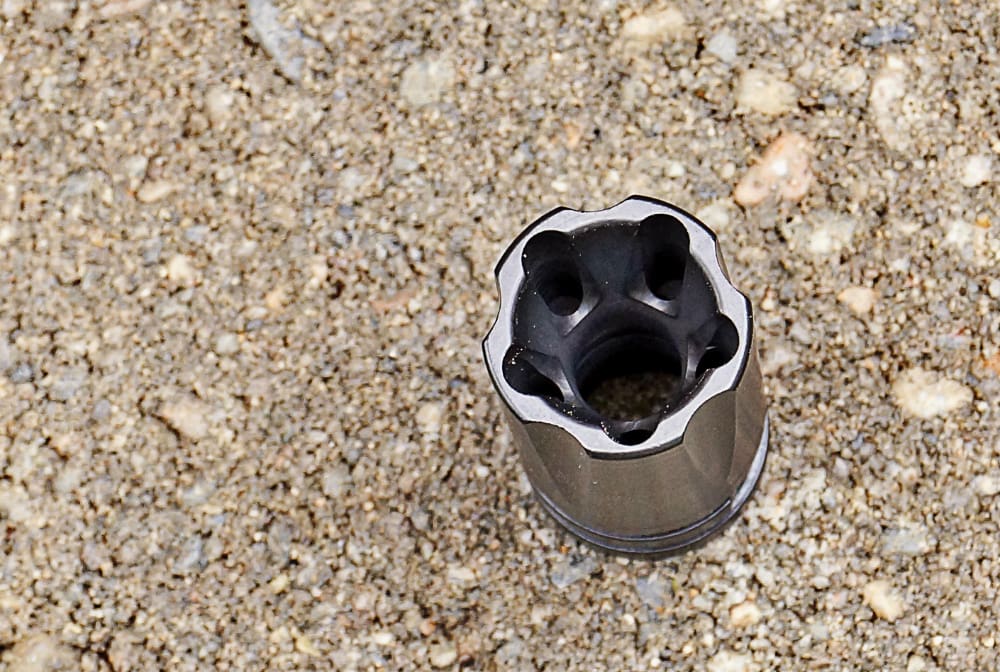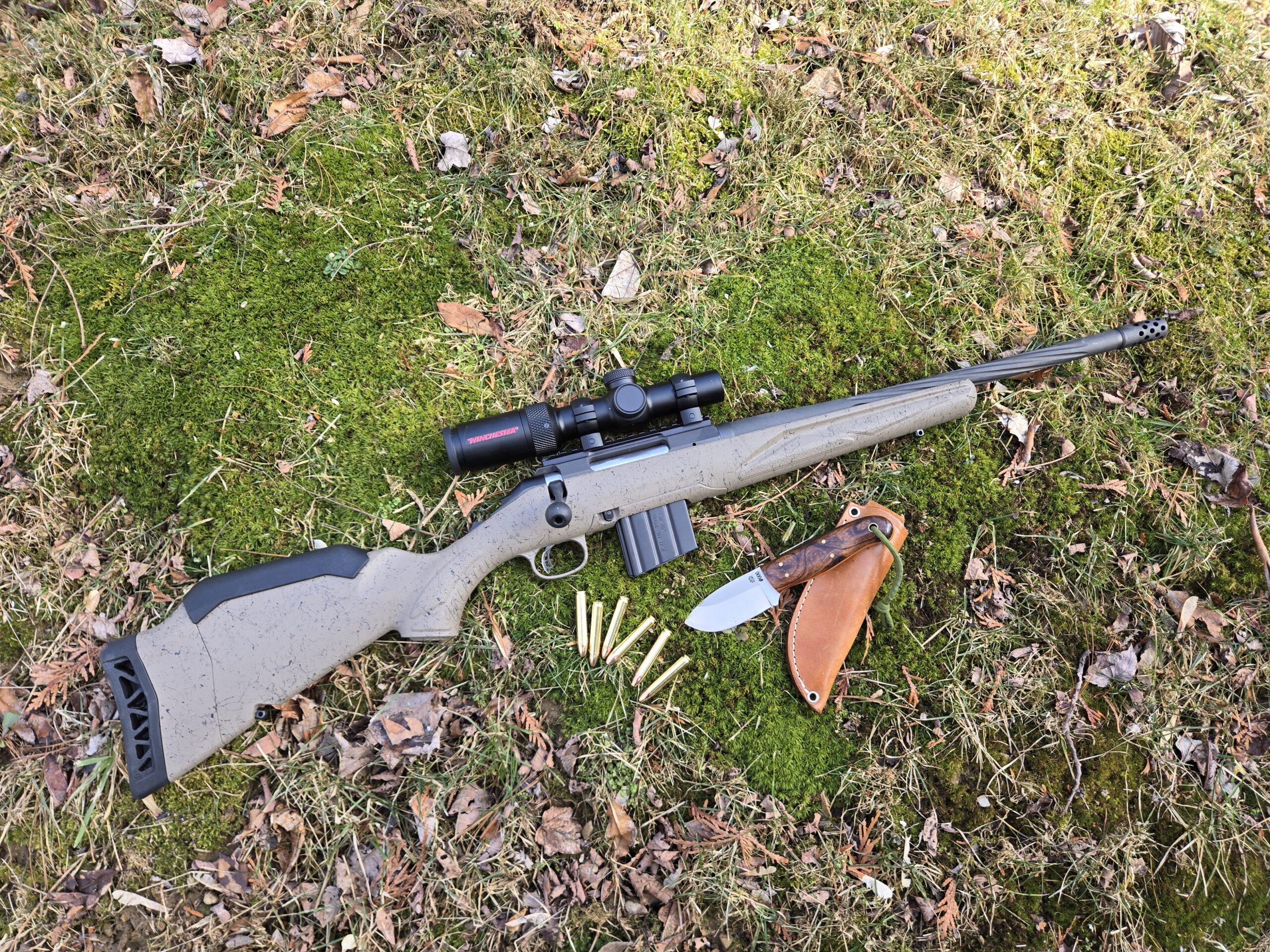In Muzzle Brake Shootouts Part 1 and Part 2, we were primarily testing recoil reduction performance. With something like 64 brakes and comps recoil tested, it was time to move onto muzzle flash. For this shootout we were able to gather 33 different muzzle devices — mostly dedicated flash hiders but also some hybrid units — and pit them against each other for flash suppression prowess. Not only did we capture photographs of each FH in action, but with the use of a trick light meter we were able to record actual brightness measurements and scored some real, objective data. . .
EDIT: In addition to the 5.56 muzzle brake tests linked above, there is now a second 5.56 flash hiding test HERE and a .308 muzzle brake test HERE. You may also be interested in the AR-15 Drop-In Trigger Roundup HERE.
These tests are expensive, but I’d love to do more. I’ve purchased air pressure sensors designed to log blast waves so we can compare the amount of concussion each muzzle device generates, and these will be used in test four. But I have a lot of brakes to round up for that and the funding is low. I also want to do another AR-15 trigger roundup (component triggers this time) and a couple of flashlight roundups (tactical and gun-mounted). Please consider supporting this sort of testing via my Patreon page. As a Patron you can also get free stuff, join live streams, gain early access, and more.
First, this test was made possible thanks to Sharp Shooting Indoor Range & Gun Shop in Spokane, WA. They were nice enough to not only loan me their entire south shooting bay with all of the lights turned off, but also loaned me a couple of the muzzle devices seen here. Sharp Shooting has dozens of flash hiders, brakes, triggers, grips, optics, and just about every other rifle part you can think of in stock along with many hundreds of firearms, NFA items, holsters, ammo, and other gear. In fact, they’re one of the largest Primary Weapons Systems dealers in the U.S. and should have every single PWS product in stock and they ship ’em free of charge.
If you appreciate all this data as much as I do, they’re happy to ship guns (to your dealer) and gear and can be reached at (509) 535-4444 or through their website or Facebook.
Flash Testing
Protocol for the test was as follows:
- Camera was set up a couple feet to the right of the muzzle and elevated to see the top and the right side of each FH.
- Aperture and shutter speed were locked for the entirety of the test. The shutter was open for 3.2 seconds for each FH.
- The light meter was placed about two feet from the muzzle off at a ~45° angle to the front and slightly elevated, which should have ensured its ability to “see” brightness from the side, top, and out the muzzle of each device.
- The light meter I purchased is capable of recording flashes as brief as 10 milliseconds. It was set on “peak hold” to hopefully record the brightest single moment for each FH.
- Three shots of American Eagle 5.56 were fired while the camera’s shutter was open. This means every photo seen below is actually three gunshots all captured on one camera shot. Same goes for the light meter, which recorded the peak brightness moment of all three of those shots.
- This was all fired through my go-to upper, which is an Adams Arms complete piston upper with 16″ barrel.
Thanks to the artificially-[not]lighted environment inside of Sharp Shooting’s range, the light meter read a consistent 0.25 Lux during the entirety of the testing. For reference, 0.25 Lux is apparently about how bright a 3/4-full moon makes the ground. The light meter was not “zeroed” out, so all of the Lux readings to follow “include” the ambient light level. For example, our winner turned in a result of just 0.31 Lux. With an ambient reading of 0.25, it sure didn’t add much.
http://youtu.be/6JkmWVCd674
With all of that said, our flash suppression winner is…drum roll please…
JP Enterprises’ Flash Hider!
Click any of the charts, graphs, and photographs that follow to enlarge them. Click here to download the Excel doc with all of the data — Lux reading, weight, length, diameter, and price — for each FH.
^^^ note that bare muzzle, DoubleStar Dragon, Spike’s Tactical Dynacomp Extreme, and Troy Claymore are missing from the graph above. As you’ll see in the chart below, they were so bright that including them would have completely destroyed the scale of the graph.
Flash Hiders
Listed alphabetically. All stated weights and dimensions are as measured by me. I noted obvious errors and/or complete omissions on many manufacturers’ sites so chose not to use any of their info across the board.
If you notice the action photos getting blurrier as the test goes on, well, it isn’t in your head. Looks like the blast from the gunshots progressively bumped the focus on my lens, and naturally I didn’t notice until looking at the pictures on my computer later. If there’s a FH test #2 in the cards, I suppose I’ll have to tape the focus ring down.
Bare Muzzle
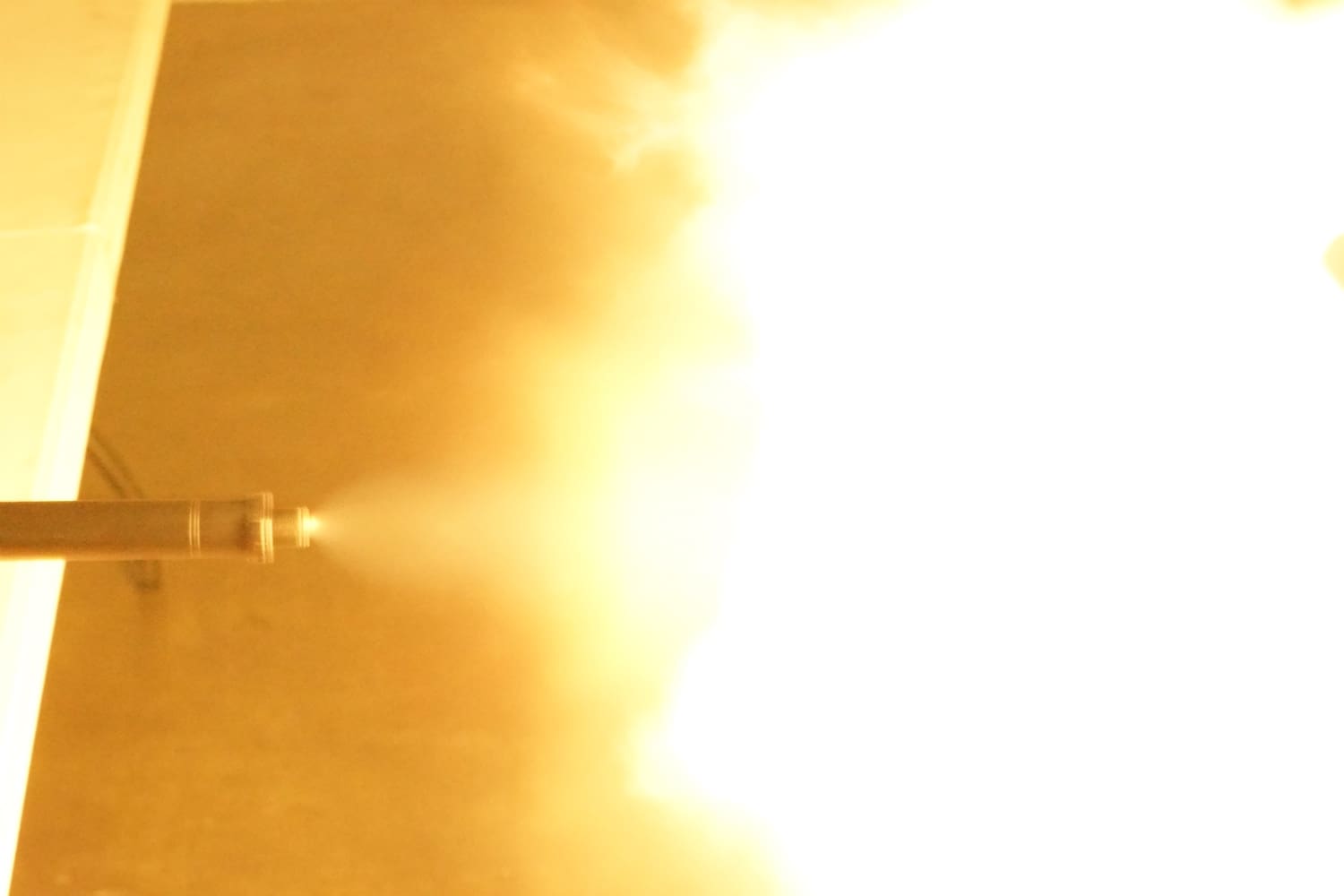
A2 Birdcage:
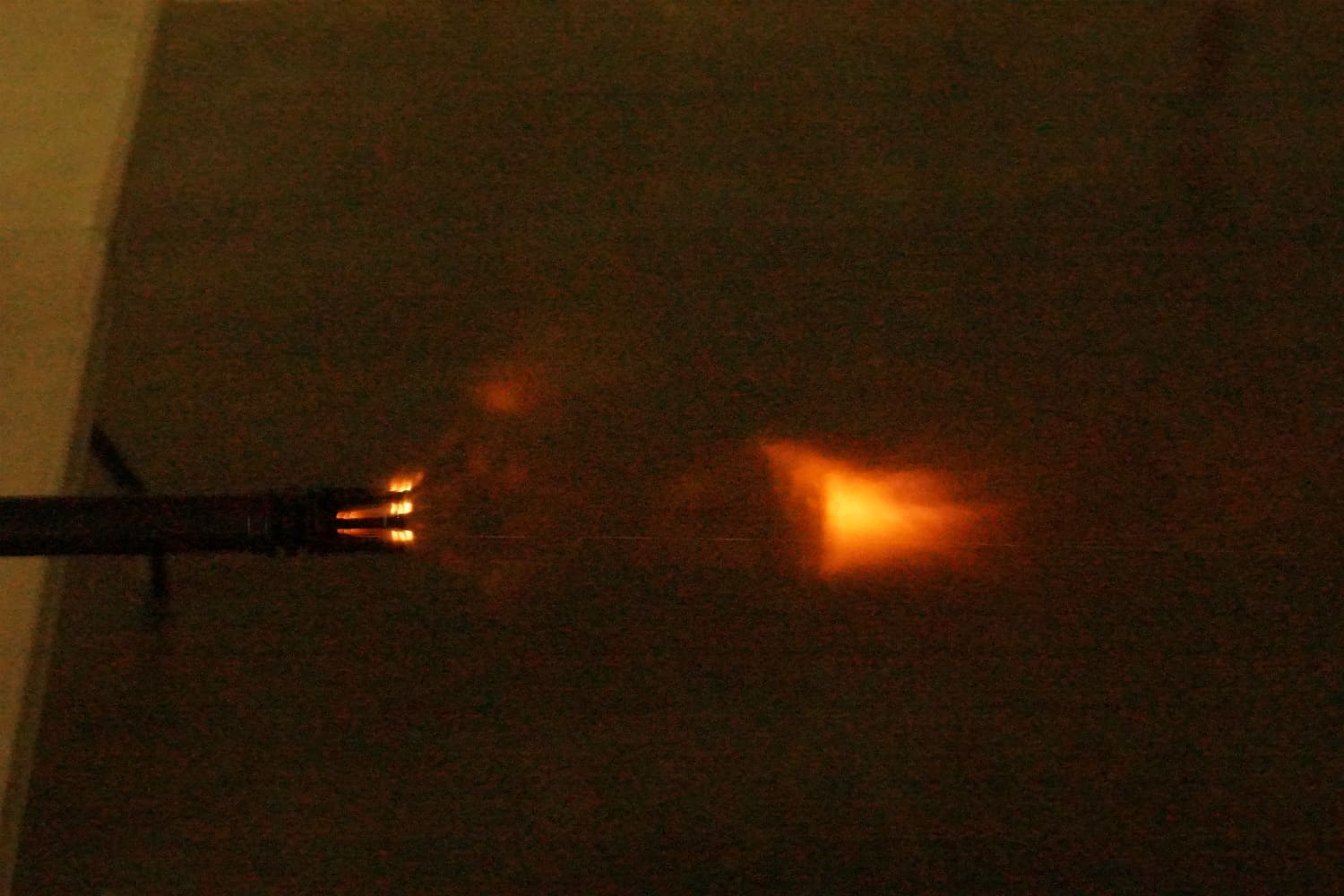
Fairly standard going rate for a brand new A2 Birdcage style flash hider is about $9. Of course, there’s a good chance that one came on your rifle from the factory. If hiding flash is your priority, the ol’ birdcage is always going to be the budget champion. Solid performance and you probably already, accidently own one(s).
2A Armament T3 Compensator:
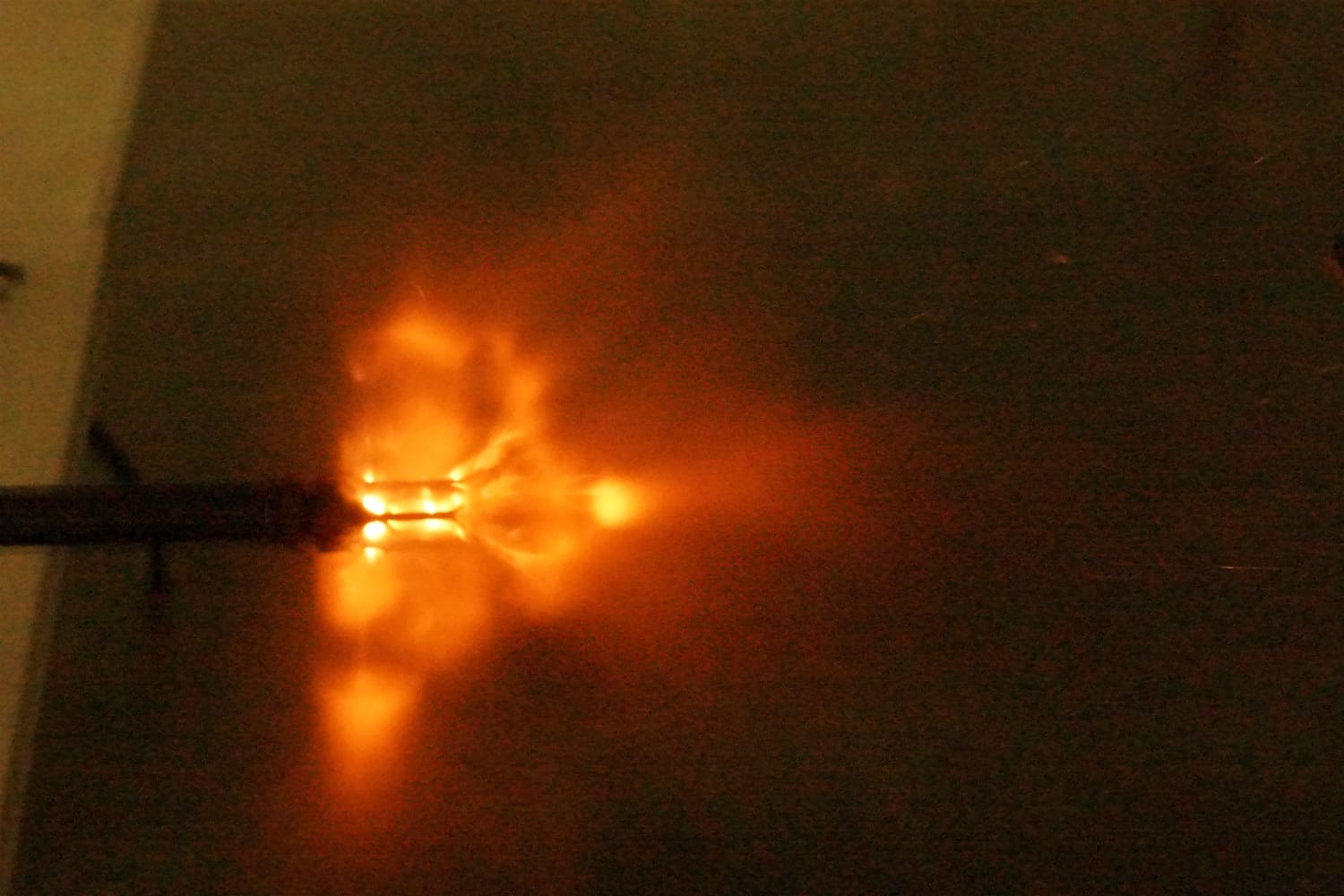
Previously seen in the AR-15 Muzzle Brake Shootout #2 recoil test.
Flawless machining and an extremely consistent and nice black phosphate finish. The complex appearance of the baffle and port structure is really cool. It’s a dual baffle comp that vents more gas upwards than downwards to compensate for recoil-induced muzzle rise. 2A claims it keeps flash to a minimum compared to most brakes and comps, and now we know. It’s small, light, and works as a QD mount for some suppressors. Also available in titanium.
Material: 4140 bar stock steel
Finish: black phosphate
Length: 2.12″
Diameter (at largest point): 0.86″
Weight: 2.56 oz
MSRP: $75
Advanced Armament Corp (AAC) BLACKOUT 90T Flash Hider:
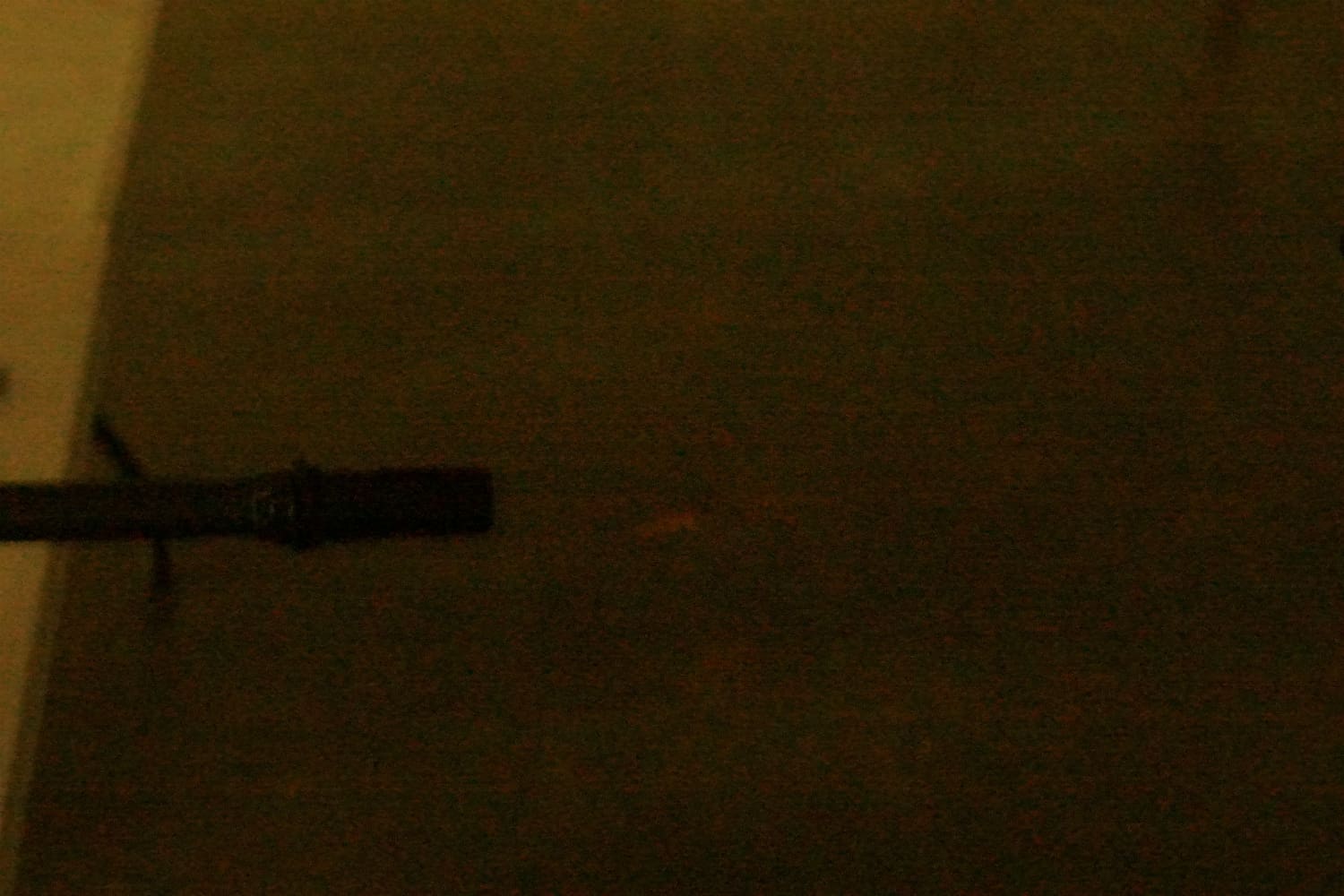
I got my hands on a 90-tooth QD suppressor mount version of the BLACKOUT for this test, but if you aren’t looking to mount an AAC suppressor then the non-mount version here should offer identical flash hiding performance in a smaller, lighter, less-expensive package.
Machining and finish are top notch. Flash hiding performance is almost absolute. For the record, one of the prongs of the FH is blocking the camera’s view of what may be going on inside of the BLACKOUT. The light meter was positioned lower and forwards and would have “seen” brightness inside the BLACKOUT that the photo doesn’t show.
Material: “high strength corrosion-resistant aerospace alloy”
Finish: Nitride
Length: 2.61″ (2.125″ for non-mount version)
Diameter (at largest point): 1.145″ (~0.85 for non-mount)
Weight: 4.63 oz (~2.9 oz for non-mount)
MSRP: $119.99 ($58.99 for non-mount)
Battle Comp Enterprises Battlecomp 2.0:
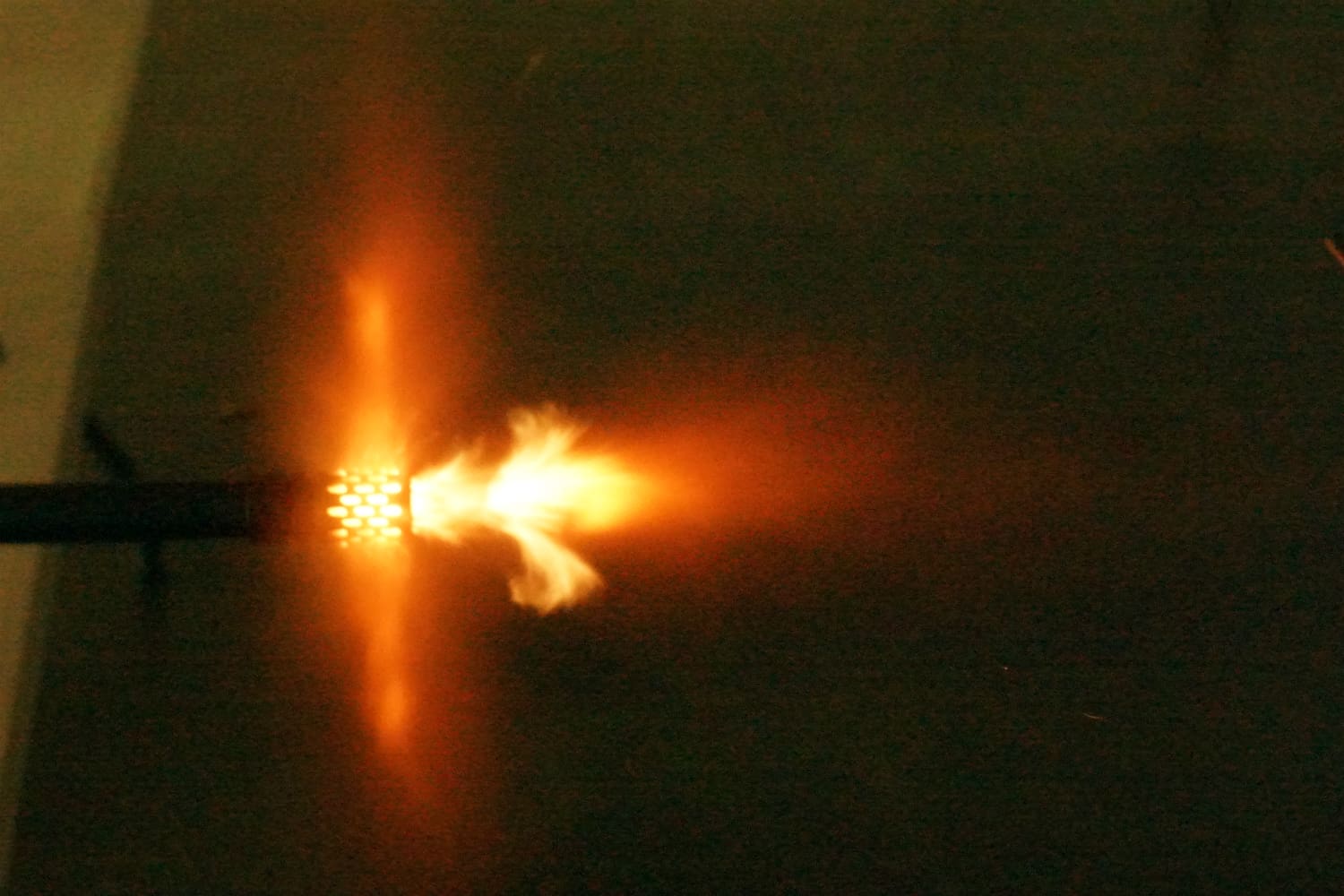
Previously seen in the first AR-15 Muzzle Brake Shootout.
The Battlecomp is definitely a known quantity, so it had to be included here (even if Vuurwapen Blog hates its guts). It’s popular in part because it’s small, light, and an effective compensator. Now we know how it is as a flash suppressor. Machining is good. Black oxide finish is standard.
Material: 17-4PH heat treated stainless steel
Finish: Bead oxide
Length: 1.755″
Diameter (at largest point): 0.866″
Weight: 1.81 oz
MSRP: $165
Bravo Company USA BCMGUNFIGHTER Compensator MOD 1 – 5.56:
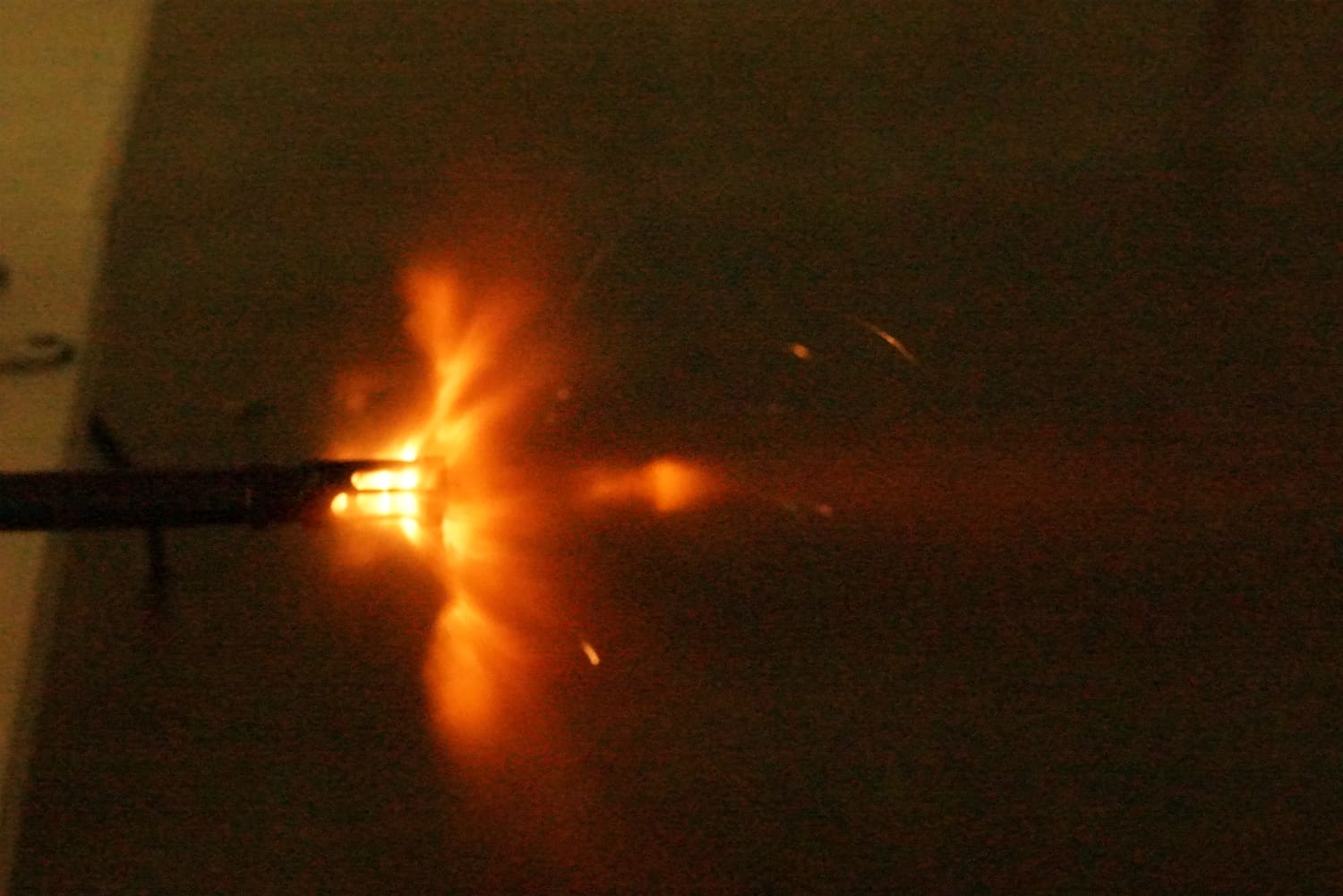
Previously seen in the first AR-15 Muzzle Brake Shootout.
Designed to reduce muzzle rise, flash, noise, concussion, and recoil. I must say that I think the design with the internal cone is pretty cool. Machining has only minor imperfections, and only if you’re looking for them, and the finish is very nice.
Material: Stainless steel
Finish: unknown (not mentioned on BCM’s website)
Length: 2.169″
Diameter (at largest point): 0.862″
Weight: 2.75 oz
MSRP: $94.95
Black Rain Ordnance 223 Flash Suppressor:
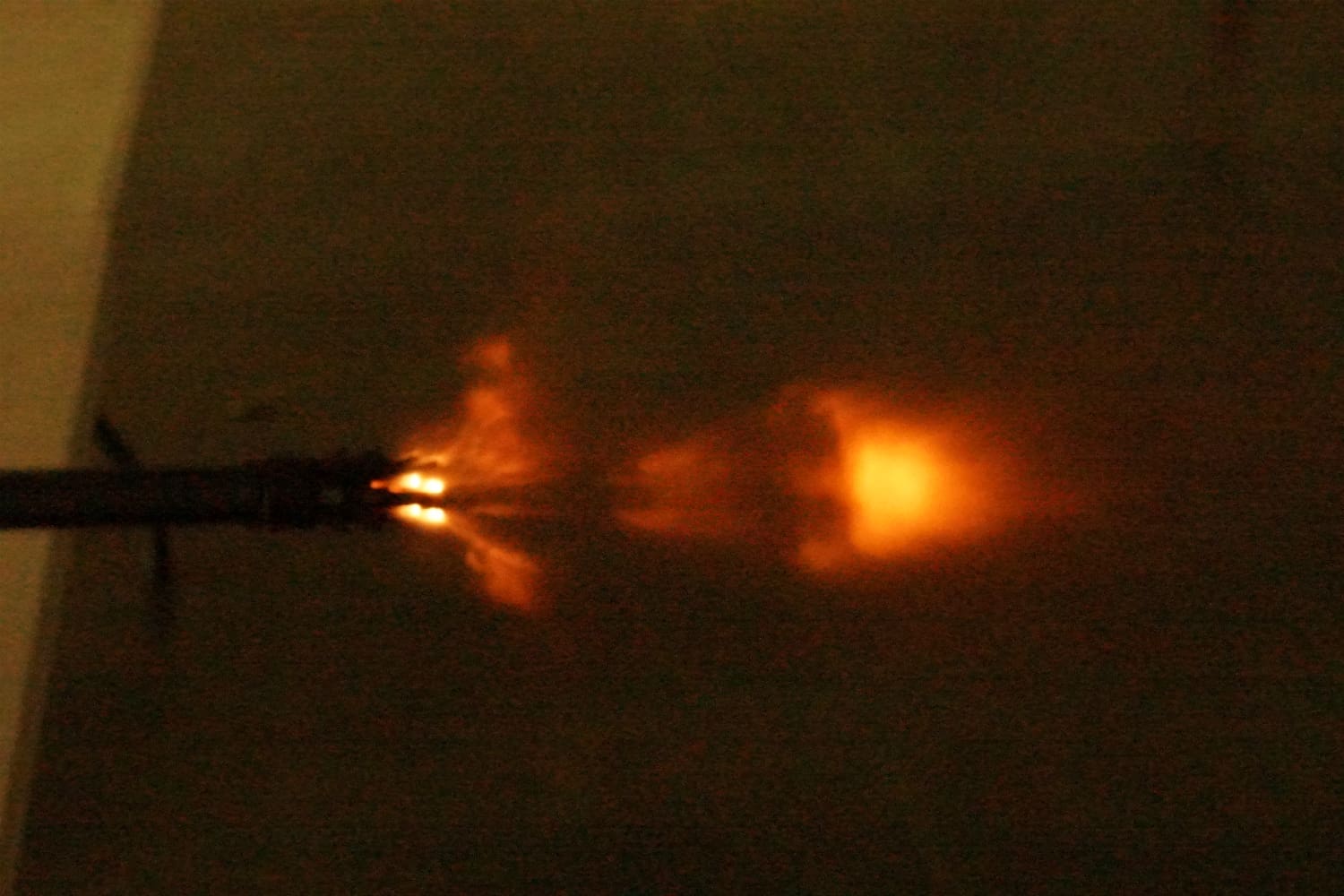
It’s rare that a design with such strong aesthetic considerations also comes with solid performance, but BRO’s flash suppressor does not disappoint. Machining is crisp, sharp, and clean with no visible tool marks. Finish is even and appears to be matte parkerized.
Material: stainless steel
Finish: black
Length: 2.23″
Diameter (at largest point): 1.00″
Weight: 3.24 oz
MSRP: $139
Black River Tactical Covert Comp 5.56:
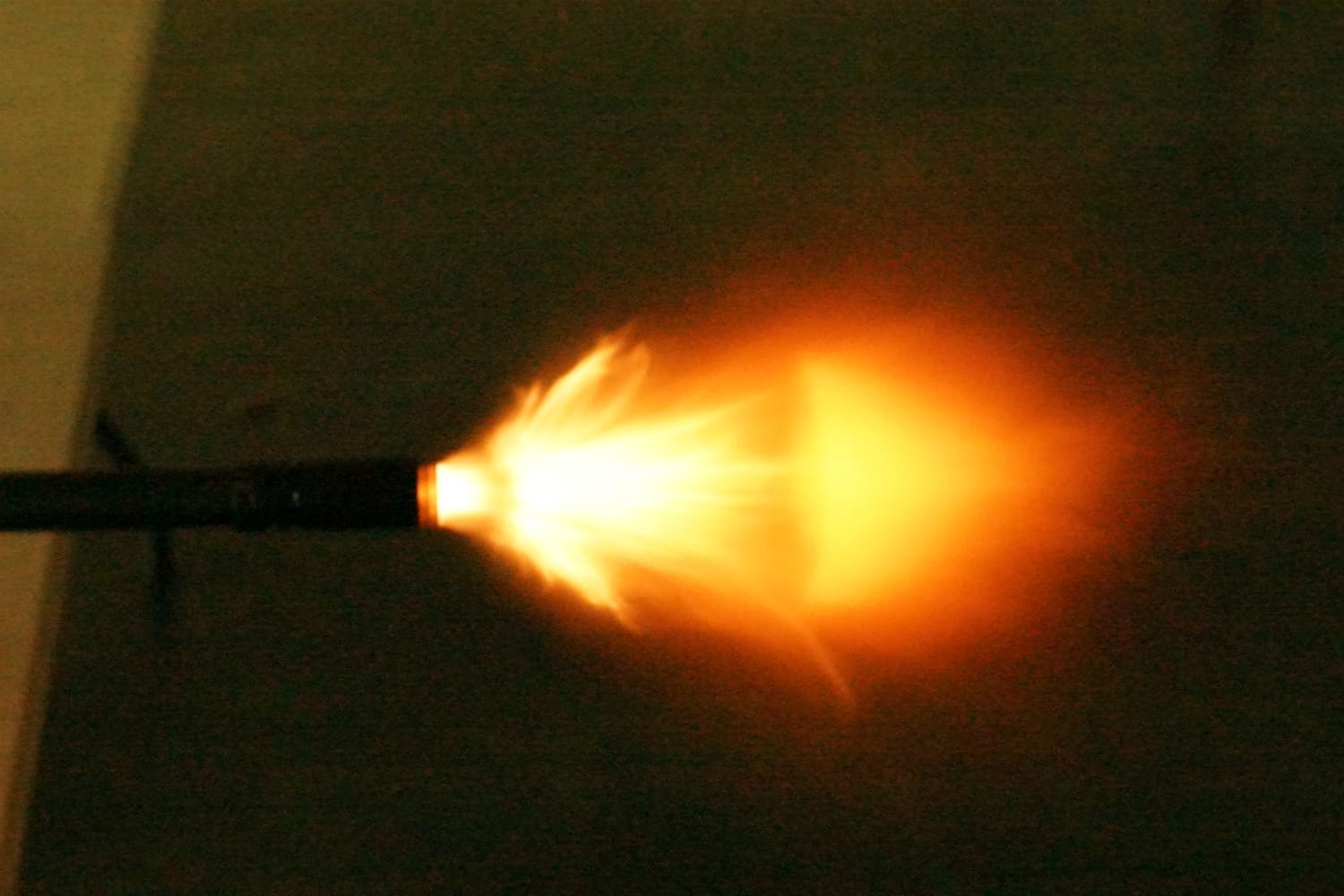
Previously seen in the first AR-15 Muzzle Brake Shootout.
Linear comps are designed to redirect all of the blast, pressure, and as much of the noise as possible forwards, away from the shooter and anyone next to him or her. Most of them attempt to reduce flash signature as well, and the Covert Comp certainly does that when compared to a bare muzzle.
Machining is top notch and the gloss Melonite finish is really nice. Covert Comps are available in fluted or smooth exterior designs and in multiple thread pitches to suit many calibers.
Material: Tungsten Enhanced Chrome-Moly Steel, through hardened
Finish: Melonite
Length: 1.95″
Diameter (at largest point): 0.866″
Weight: 2.51 oz
MSRP: $59.95
Daniel Defense Superior Suppression Device, Extended:
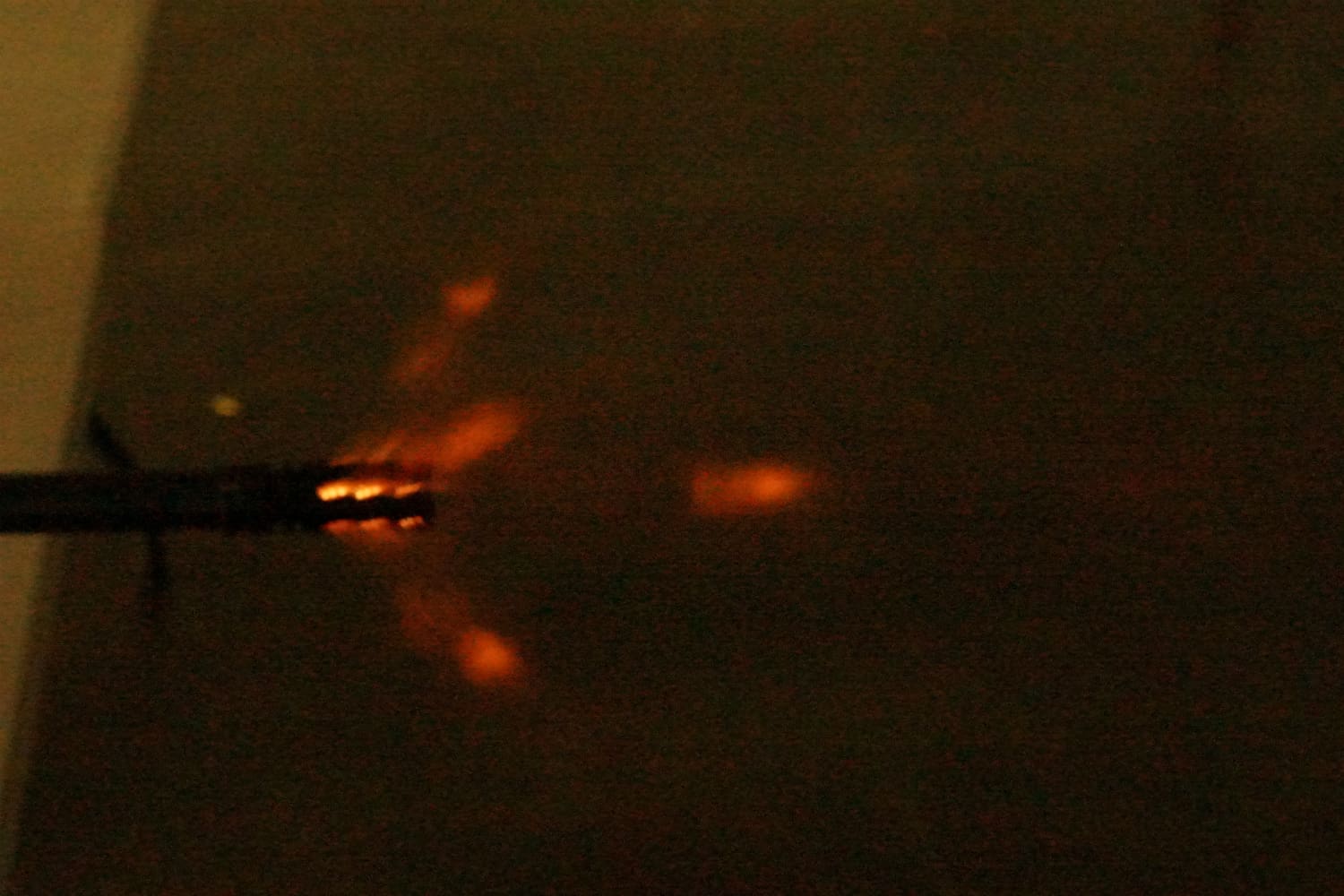
Machining is above average, finish is durable but not quite as perfectly even in tone and gloss level as some. A clean, yet interesting look with solid flash hiding performance.
Material: 17-4 stainless steel
Finish: salt bath nitride
Length: 2.255″
Diameter (at largest point): 0.865″
Weight: 2.89 oz
MSRP: $59
DoubleStar Dragon Flash Hider:
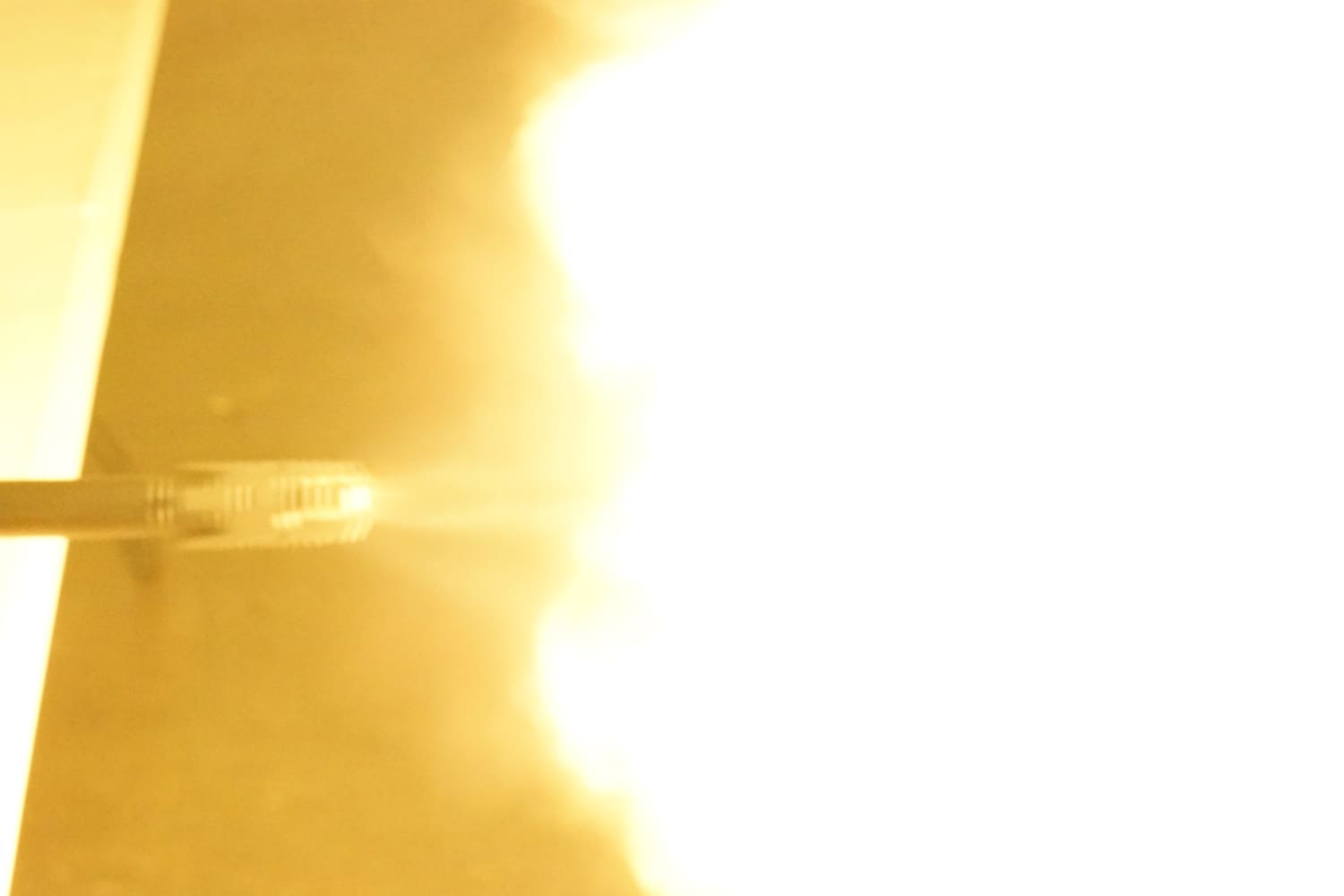
Pretty sharp machining and an even, dark gray finish. DSC’s Dragon has teeth, eyes, and nostrils and looks like a dragon’s head from the sides or from above. Kind of cool how some of it overlaps the barrel. It isn’t quite as much of a dragon’s head as this one from the first muzzle brake test, but it dang sure spits fire like the mythical beast.
That’s lots of fun for shooting on the range, but “flash hider” certainly shouldn’t be in the product name. The extraordinarily bright fireball from this bad boy caught me by surprise and I was pretty well blinded for a minute or two afterwards haha
Material: steel
Finish: not specified (guessing phosphate or parkerized)
Length: 2.14″
Diameter (at largest point): 0.99″
Weight: 2.17 oz
MSRP: $53.99
Griffin Armament M4SD Flash Comp:
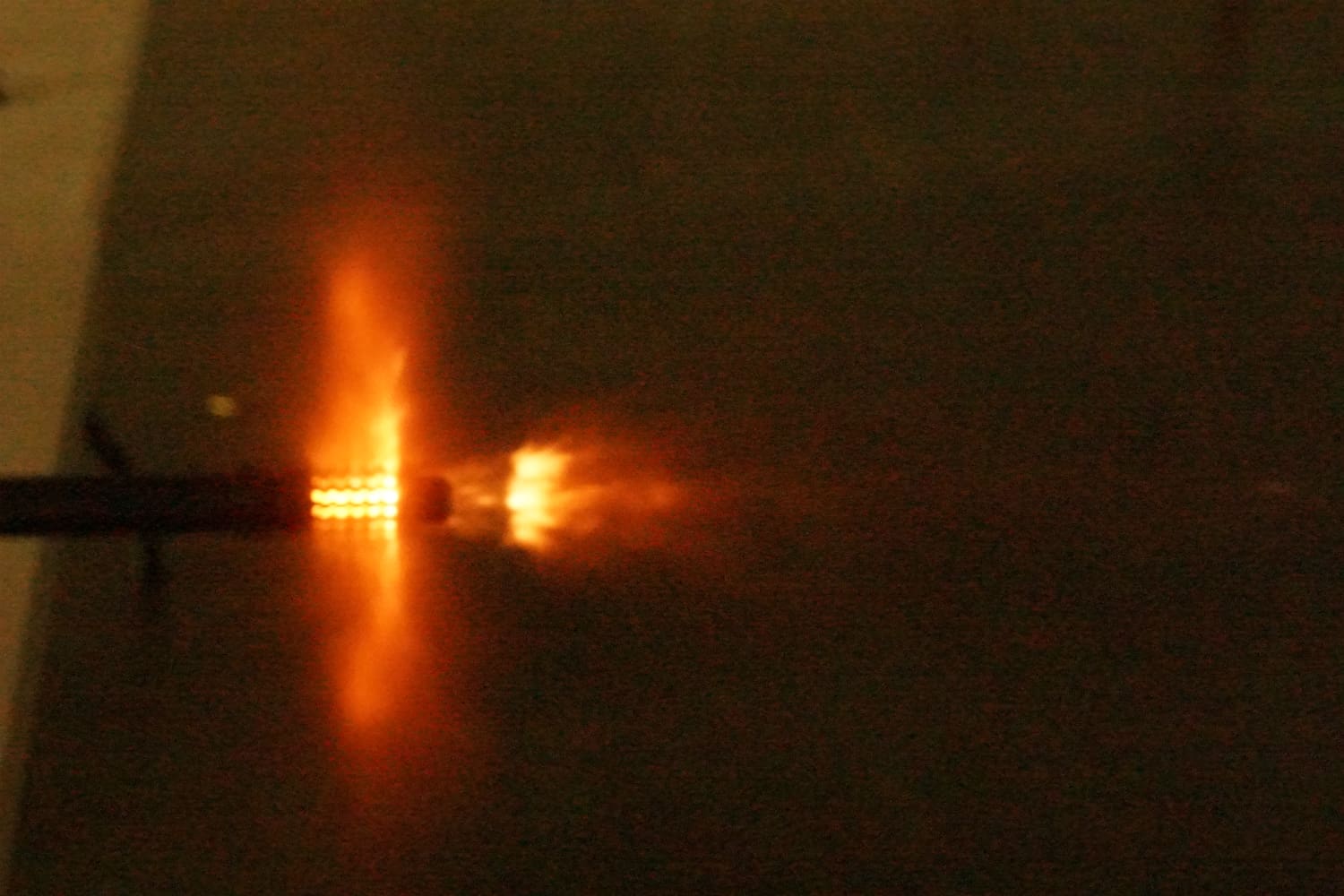
Machining is clean with only the lightest tool marks in the muzzle flutes, and the black oxide finish is above average for consistency. The M4SD offers a look — and performance — that isn’t too flashy. It’ll return for muzzle brake test #3.
Material: 17-4PH stainless steel
Finish: black oxide
Length: 2.26″
Diameter (at largest point): 0.864″
Weight: 2.89 oz
MSRP: $99.95
JP Enterprises Flash Hider:
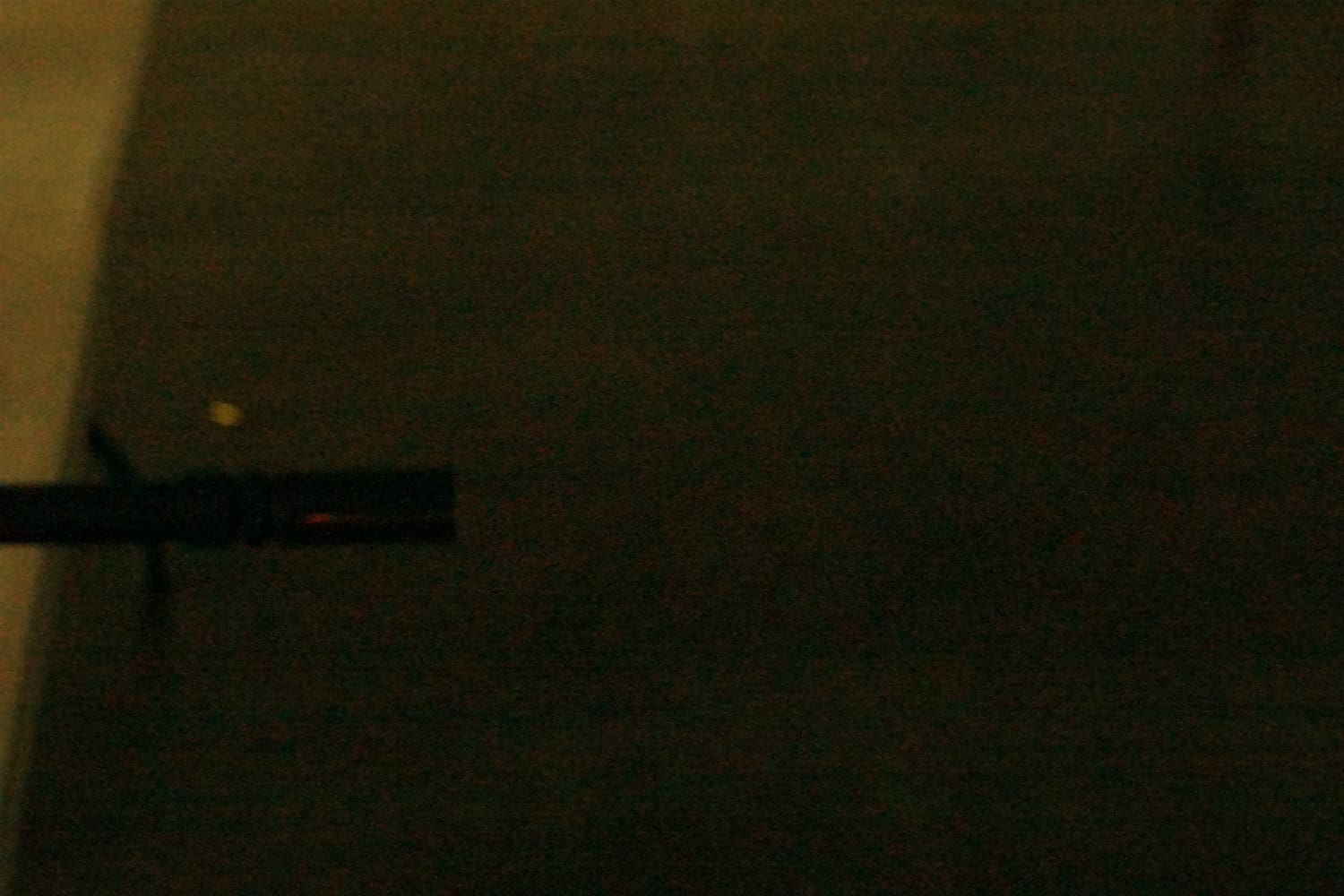
At first glance JP’s Flash Hider is a fairly standard, 3-prong job, although maybe a tad longer than the norm. Look closer and you’ll notice the serrations on the inside of each prong. Apparently they’re effective, as this was the least-flashy unit in the test, turning in a Lux result barely above ambient — and I tested it twice to be sure. The base actually overlaps the barrel by about 1/2″ for easier pinning and welding, so the length stat below slightly exaggerates the effective “installed length.”
I see no imperfections in the machining, and the finish is entirely even. It ships in a standard JP clamshell package complete with ear plugs, crush washer, pin for permanent attachment, and install instructions. The JPFH-556 is also under $60, which is below average for MSRPs in this test.
Material: steel
Finish: magnesium phosphate
Length: 3.125″
Diameter (at largest point): 0.875″
Weight: 3.75 oz
MSRP: $59.95
King Armory KA-1222A:
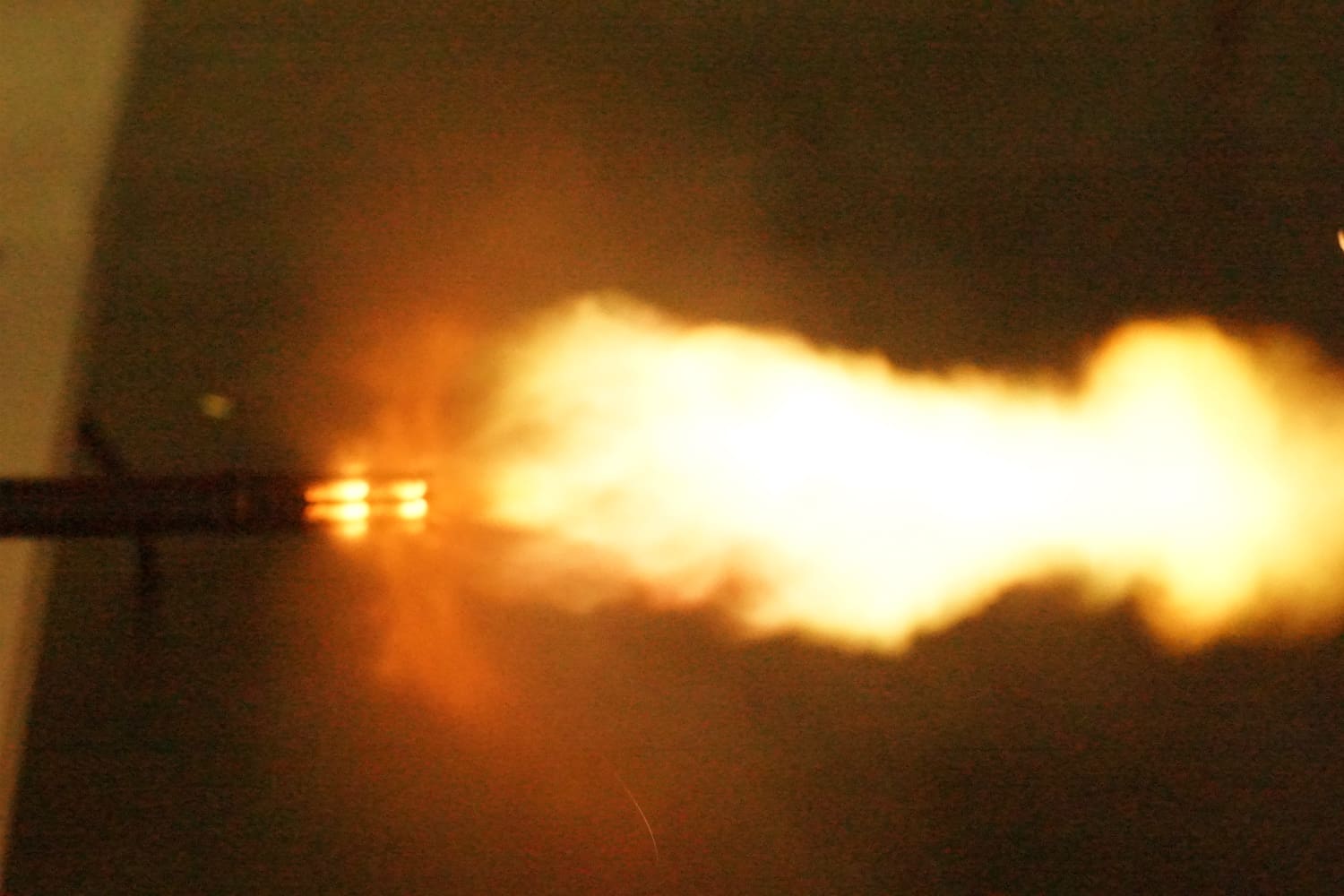
King’s 1222A is a combination muzzle brake and flash hider that reduced recoil force by just over 46% while maintaining a clean, sleek design and light weight. Its diameter is perfect for a mil-spec barrel and can look like an integral part rather than a bolt-on. Looks like it doesn’t really disrupt the gasses jetting out of the muzzle aperture enough to stop that jet of fire, though. Of course, it’s still a massive reduction compared to a bare muzzle.
Machining and finish are great, as I happen to like the really fine and consistent tool marks that give it that “turned” look and the nitride finishes tend to be my favorite.
Material: 4140CM (also available in 416P70 stainless steel)
Finish: Nitride
Length: 2.25″
Diameter (at largest point): 0.74″
Weight: 2.11 oz
MSRP: $64.99 ($74.99 in stainless)
Knight’s Armament QDC MAMS Brake:
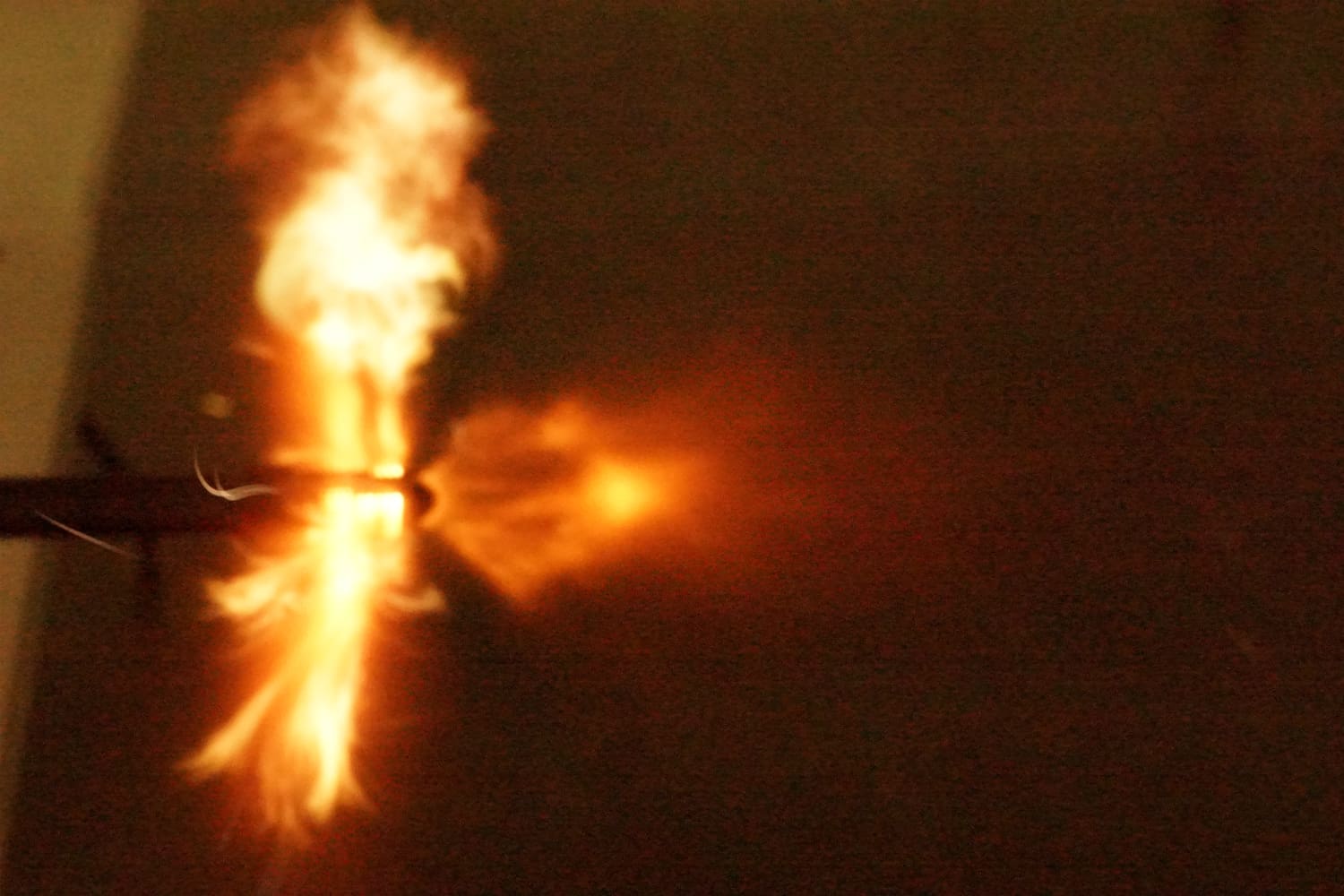
The MAMS Brake acts as a quick disconnect coupling (QDC) for a few of KAC’s suppressor models. At just shy of $300, it’s the most expensive, currently-produced muzzle device in this roundup. Machining and finish are good, and all of the tiny vent holes are particularly clean. Welding the muzzle cap onto the body allows for interior features that may have otherwise been impossible to machine through a 5.56-appropriate muzzle aperture. KAC claims up to a 67% reduction in felt recoil, so the MAMS will definitely return for muzzle brake test #3.
Nowhere near as bright as a bare muzzle, but the MAMS is still good for a bit of fire.
Material: steel
Finish: black
Length: 2.20″
Diameter (at largest point): 0.864″ (not including the protruding QD pin)
Weight: 2.35 oz
MSRP: $299.95
Knight’s Armament Triple Tap Flash Suppressor/Compensator:
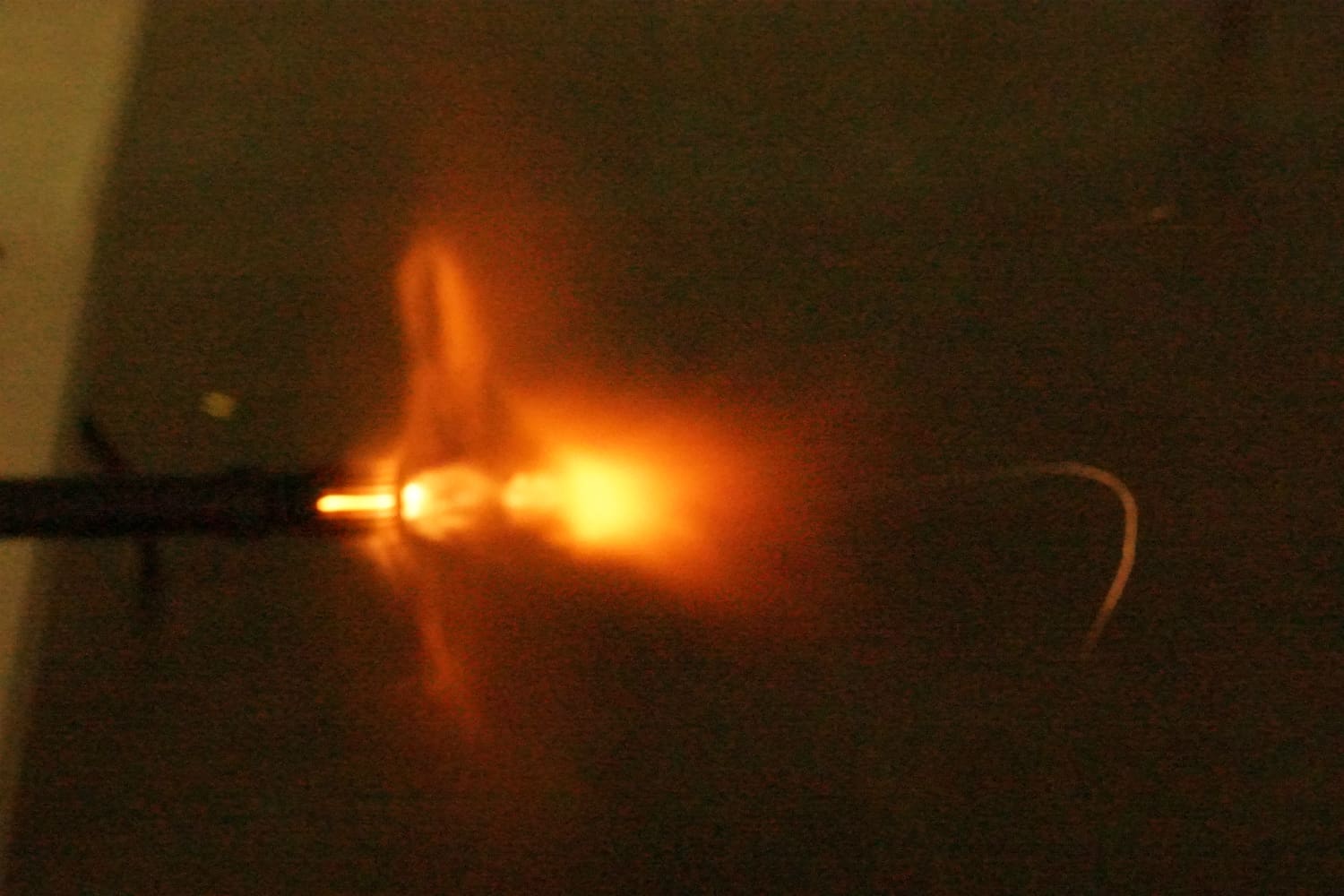
It’s no longer in production, but if it were this ~$450+ MSRP compensator would take the prize for top asking price. The “3T” was expensive in part due to being wire EDM-machined from Inconel, a name-brand “superalloy” that maintains excellent strength and corrosion resistance at extremely high temperatures. Machining is extremely good but not entirely flawless. I believe the example I borrowed is bare Inconel with no coating or other finish.
For a hybrid device, flash hiding is pretty solid. The Triple Tap will also visit us again for the next muzzle brake test.
Material: Inconel
Finish: bare
Length: 1.88″
Diameter (at largest point): 0.865″
Weight: 2.66 oz
MSRP: $450 or a bit higher (hard to lock down since it’s out of production)
Lantac Dragon:
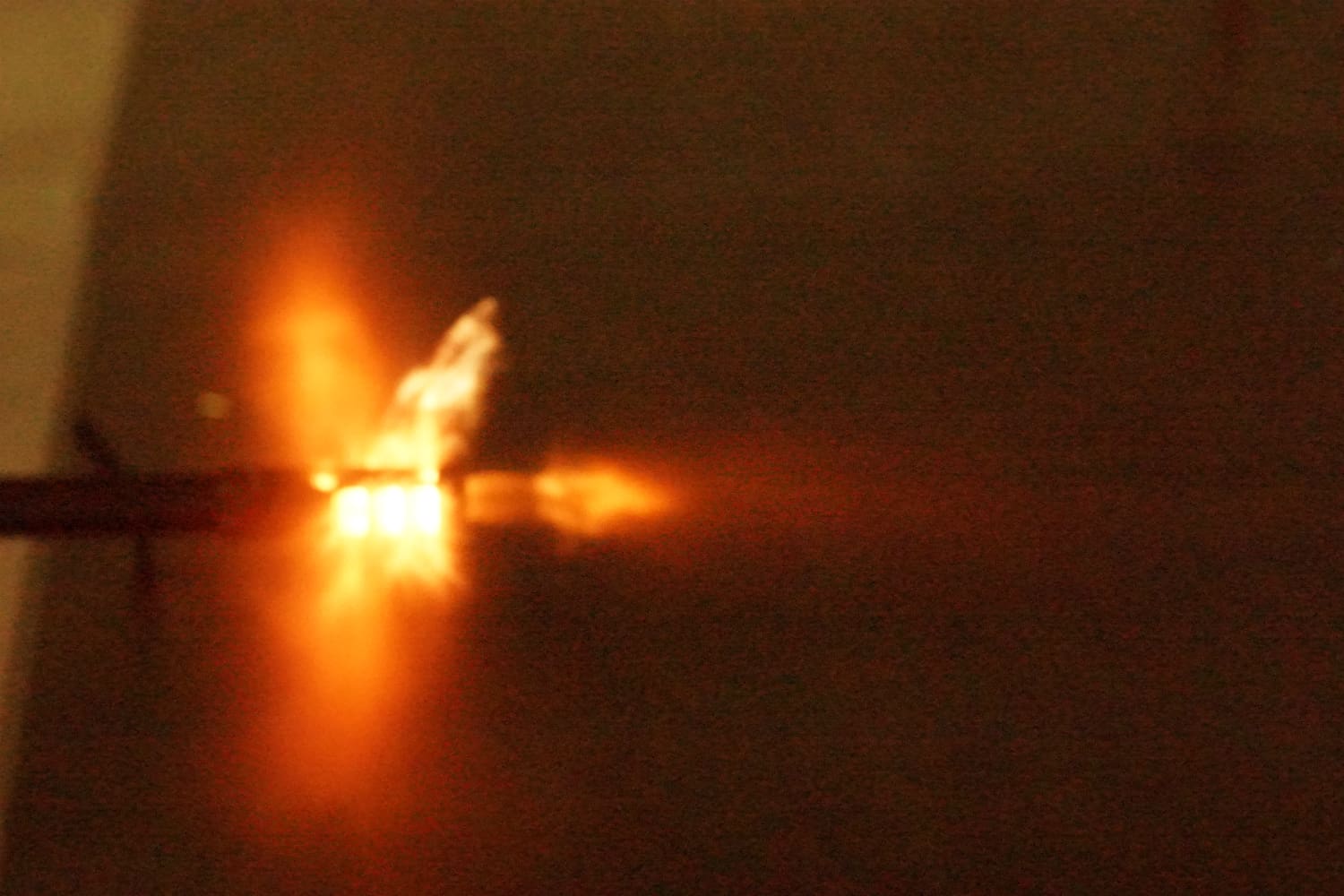
Lantac’s Dragon muzzle brake (DGN556B) was the single most-requested brake for Muzzle Brake Shootout #2. It’s insanely popular and, if for no other reason, that’s why it appears in this flash hider test as well.
Machining is great. The unique, bead blasted-like texture of the nitride finish is pretty cool. I like the feel of it, and it looks good although it does show some superficial scuffing and such. For a full-on brake, it really doesn’t have much flash or fire at all.
Material: hardened milspec steel
Finish: nitride
Length: 2.57″
Diameter (at largest point): 0.863″
Weight: 3.15 oz
MSRP: $140
Liberty Suppressors Mystic X:
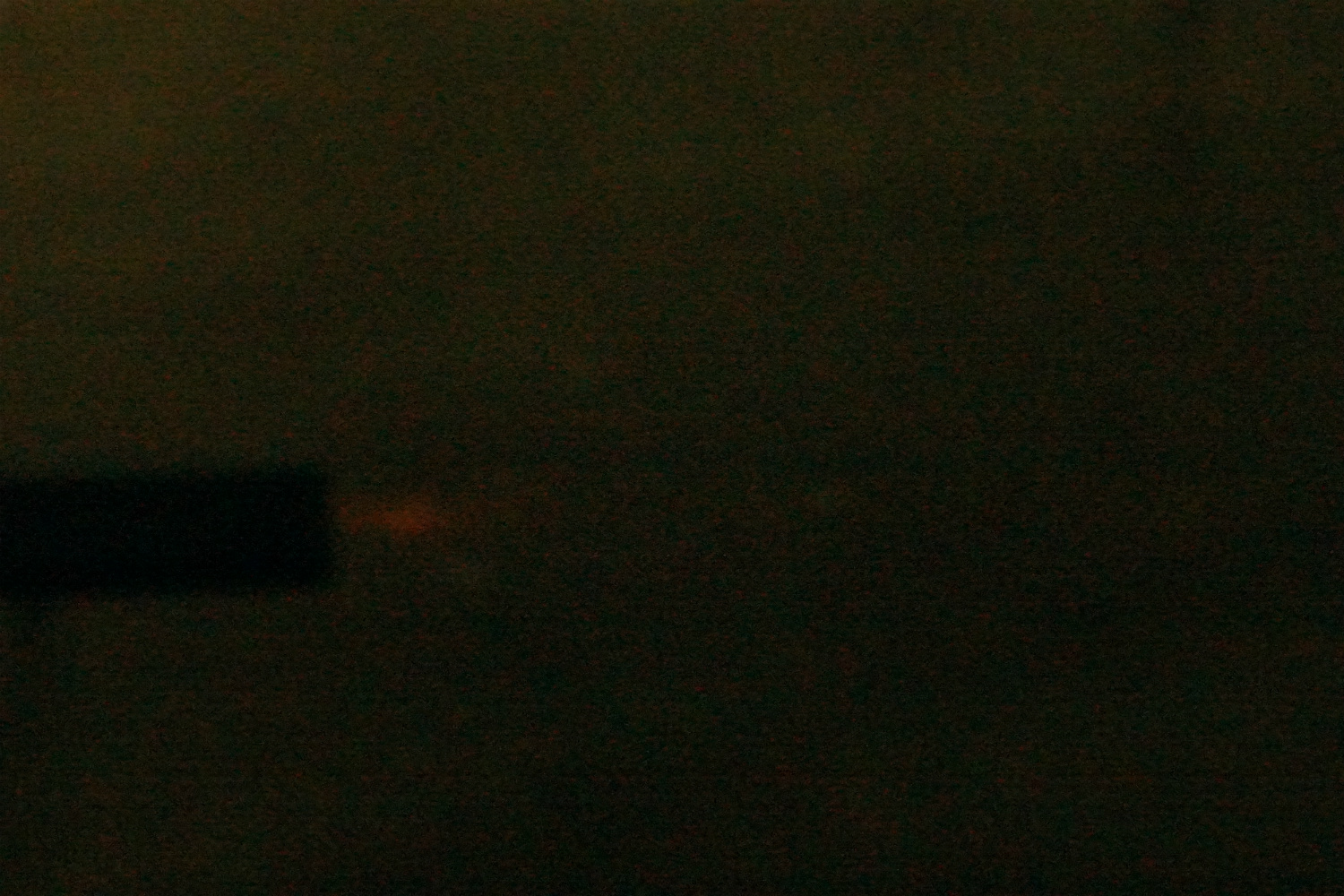
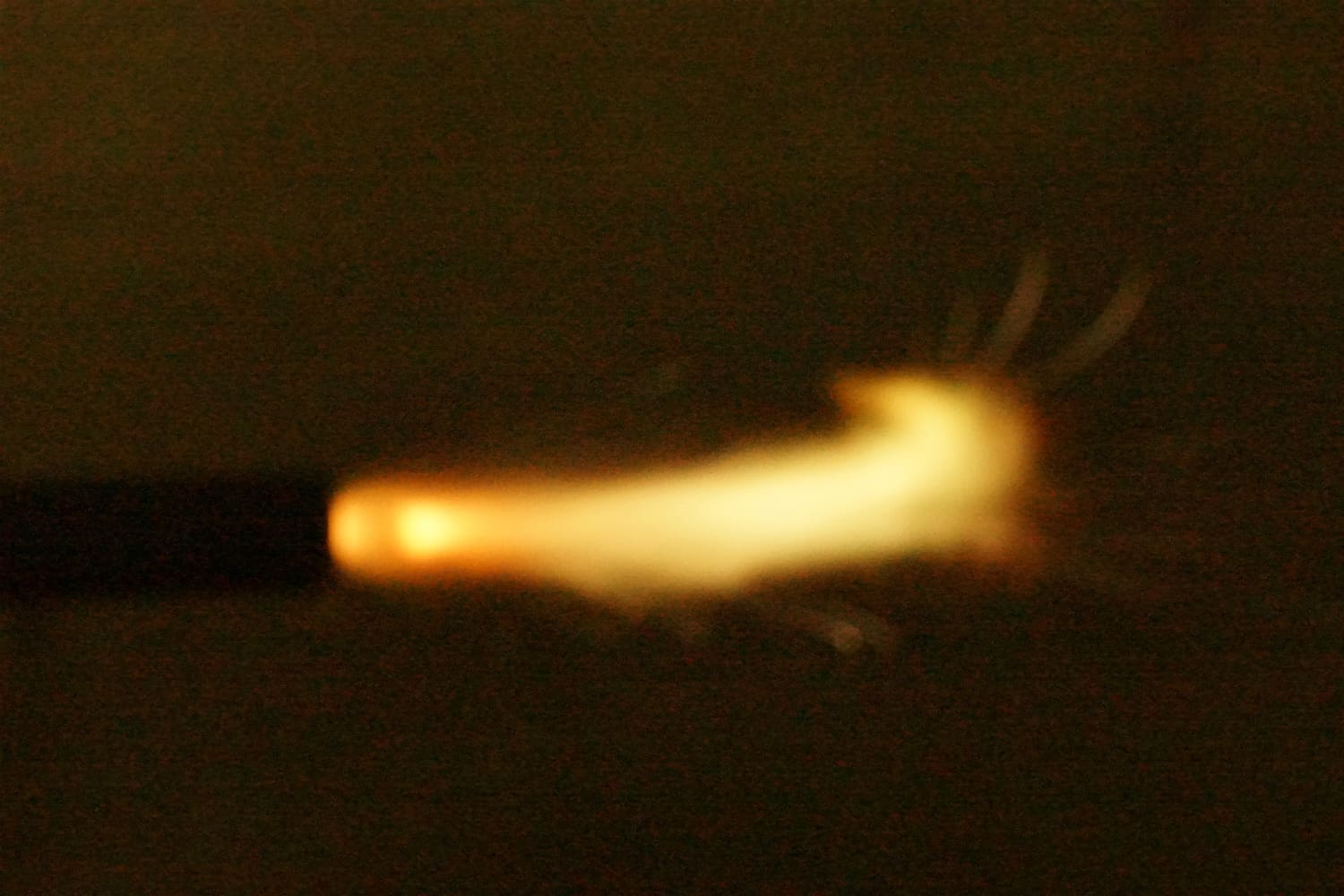
While not a flash suppressor and not even a 5.56-specific silencer (the Mystic is primarily designed for 9mm pistol rounds), I thought I’d include Liberty’s Mystic X in the test here anyway. The photo on bottom is from the first series of three rounds, where the oxygen inside of the can allowed for the combustion of unburned powder and resulted in that tongue of flame out the front. Actually, only the first round showed flash and the next two did not, so I went ahead and did another set of three shots. That series is what you see in the top photo. With no O2, there’s no flash. This is also explains “first round pop,” where the first round tends to be louder than subsequent rounds thanks to the presence of oxygen inside of the firearm muffler.
For a glimpse inside the Mystic X, what makes it different from the previous-gen Mystic, and how this 9mm pistol can can handle full-on 5.56, see this article.
Material: Titanium tube, stainless steel core
Finish: Type C High Temp Cerakote
Length: 8.0″ (without a mount)
Diameter (at largest point): 1.375″
Weight: 10.5 oz (without a mount)
MSRP: $799
Manticore Arms Eclipse Flash Hider:
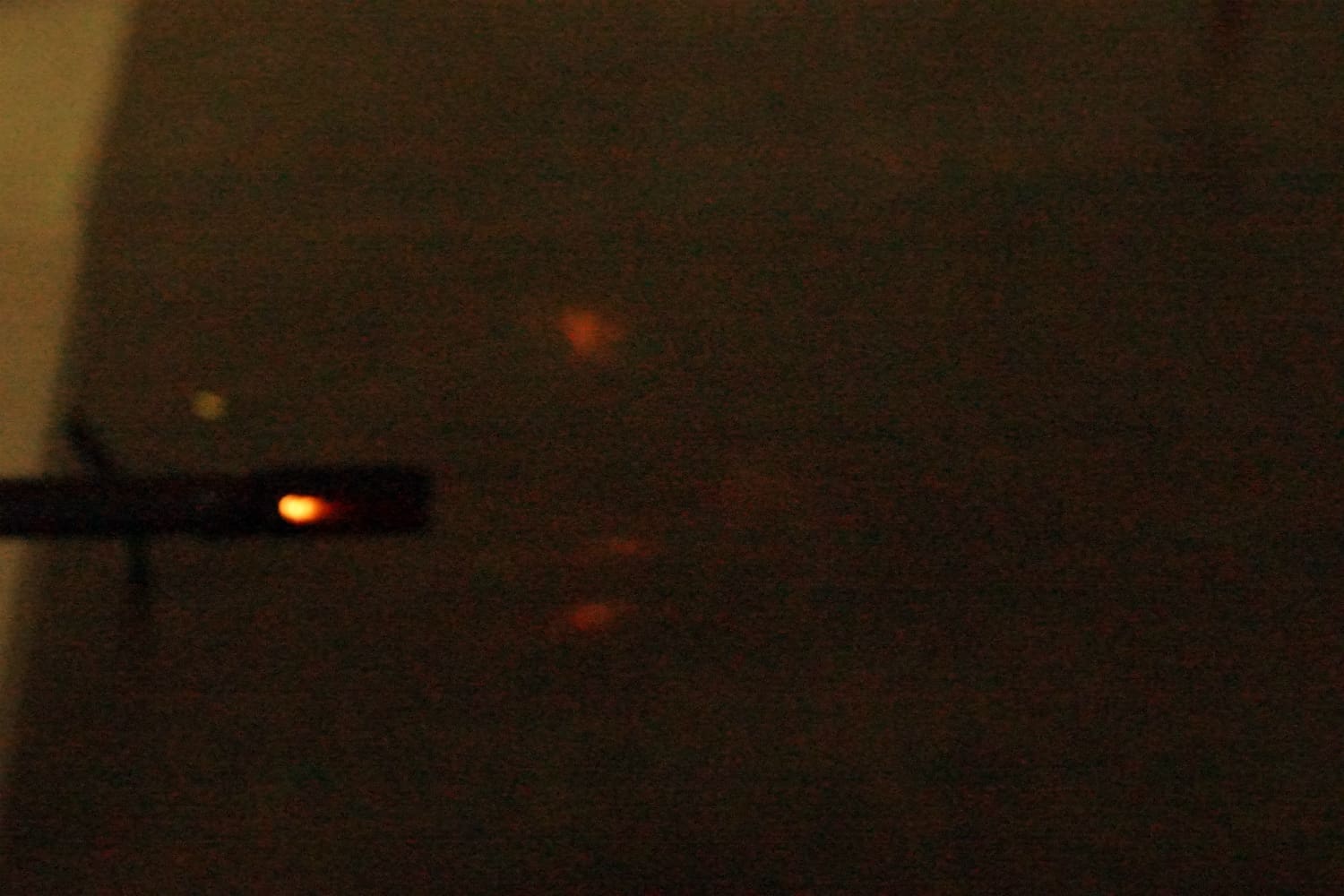
Manticore’s website says, “ZERO flash. Nada. None …we and others have not found a single brand or bullet weight of ammuntion [sic] that produces any sort of flash with the Eclipse Premium Flash Hider.” Well, I managed to catch some on film (errr, digital “film”) and the light meter picked up a few Lux as well, but it darn sure wasn’t much!
The Eclipse is a solid unit with a decent black oxide finish. Machining is fine, with some little nicks or burrs along the edges of the prongs and some internal machine lines that nobody would ever care about.
Material: 8620 steel
Finish: black oxide
Length: 2.425″
Diameter (at largest point): 0.86″
Weight: 3.49 oz
MSRP: $49.95
Precision Armament AFAB-556:
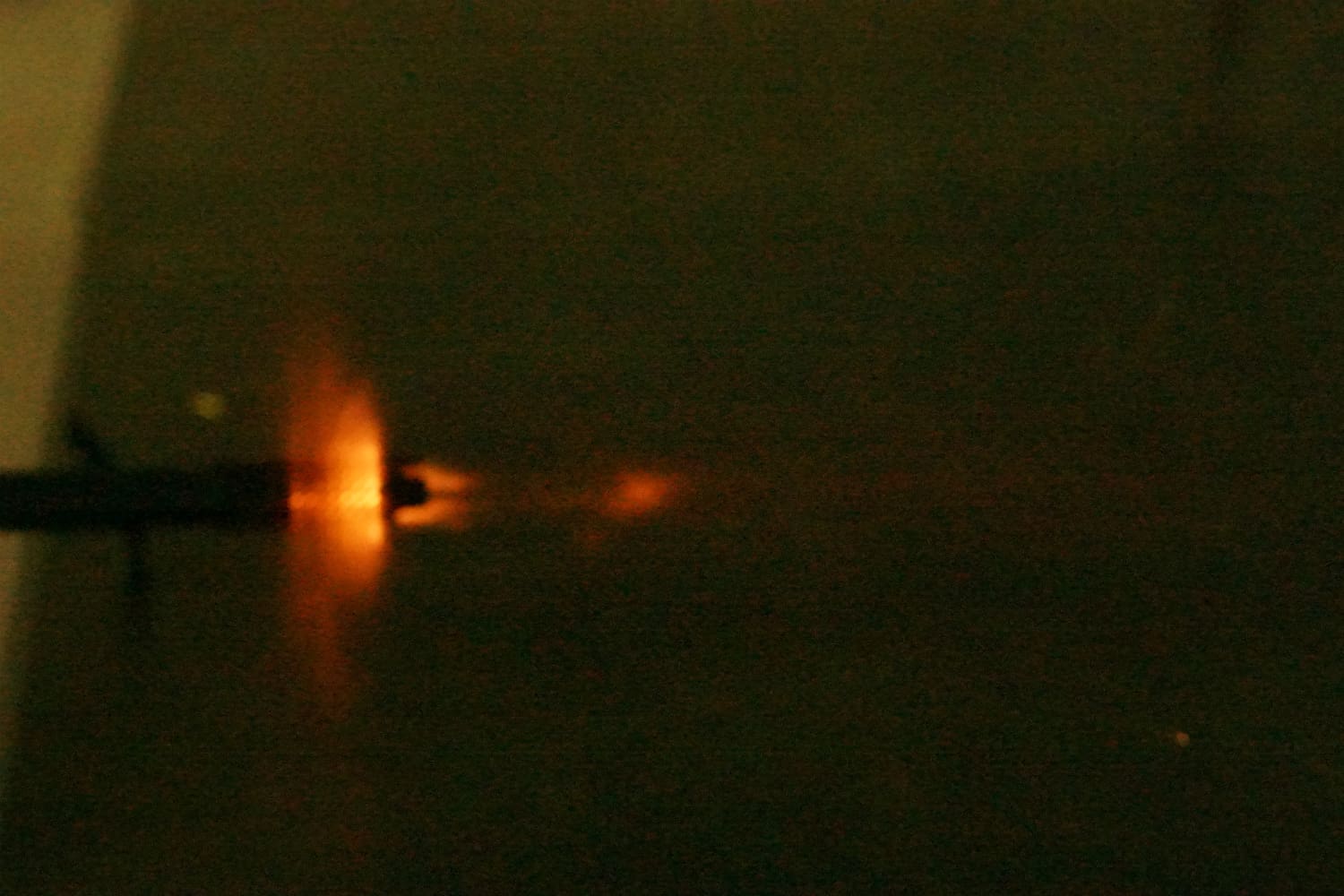
Previously seen in Muzzle Brake Shootout #2, the new AFAB — that’s Advanced Flash Arresting Brake — takes the old design to a slightly more extreme level, with deeper grooves and a baffle pattern inside the bore. It kind of reminds me of a Graboid (not an insult).
For a hybrid compensator design that mitigates recoil as well as muzzle movement in other directions, all with a bare minimum of blast and concussion, the AFAB manages to turn in solid results as a flash hider as well. In fact, of all of the hybrid devices in this test — meaning the ones with any design consideration for reducing recoil — the AFAB was ever so slightly outperformed on flash reduction by only one unit, Precision Armament’s EFAB seen below.
Machining is as good as it gets, and the Ionbond finish is very nice.
Material: HTSR 416 stainless steel
Finish: Ionbond CrCN
Length: 2.23″
Diameter (at largest point): 0.866″
Weight: 3 oz
MSRP: $109.95
Precision Armament EFAB:
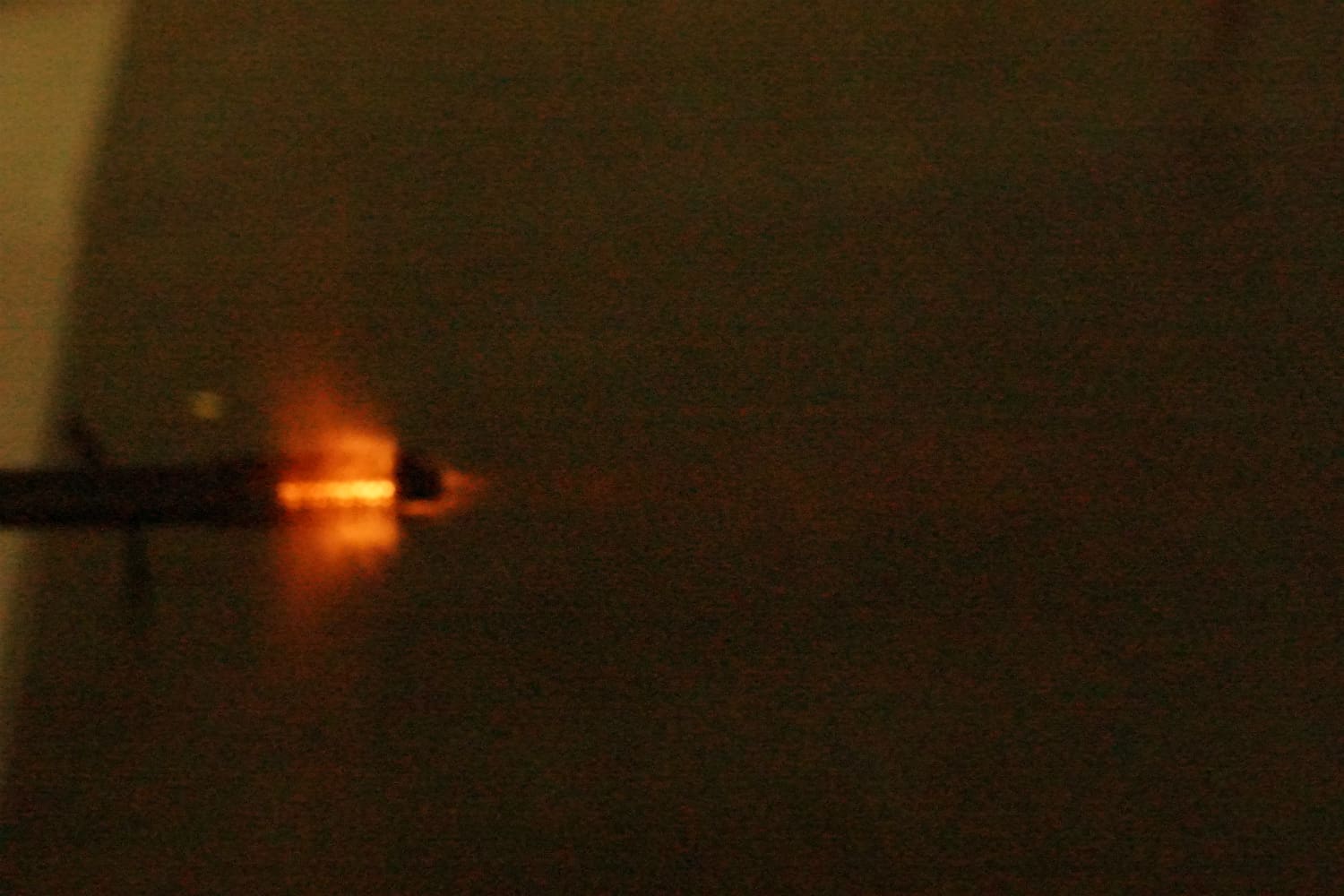
Also returning after Shootout #2, PA’s EFAB, or Enhanced Flash Arresting Brake, is supposed to be the absolute pinnacle of flash hiding compensator design. Each port has a round hole in the middle that diverges outwards into the “Y” shapes visible on the outside. Looking down the bore, the appearance is that of 9 circular blast baffles. It’s certainly a joy to shoot a rifle with an EFAB (or AFAB) on it, and now that this test is complete it appears PA’s flash hiding performance claims are warranted.
Again, machining and finish are absolutely flawless. Although the EFAB is supposed to outperform the AFAB in every way, I still kind of lean towards the AFAB for my personal rifle because I like the looks a bit more and it’s $50 less expensive (the EFAB ties up a CNC machine for quite a bit more time).
Material: HTSR 416 stainless steel
Finish: Ionbond CrCN
Length: 2.43″
Diameter (at largest point): 0.9″
Weight: 3.51 oz
MSRP: $159.95
Primary Weapon Systems (PWS) FSC556:
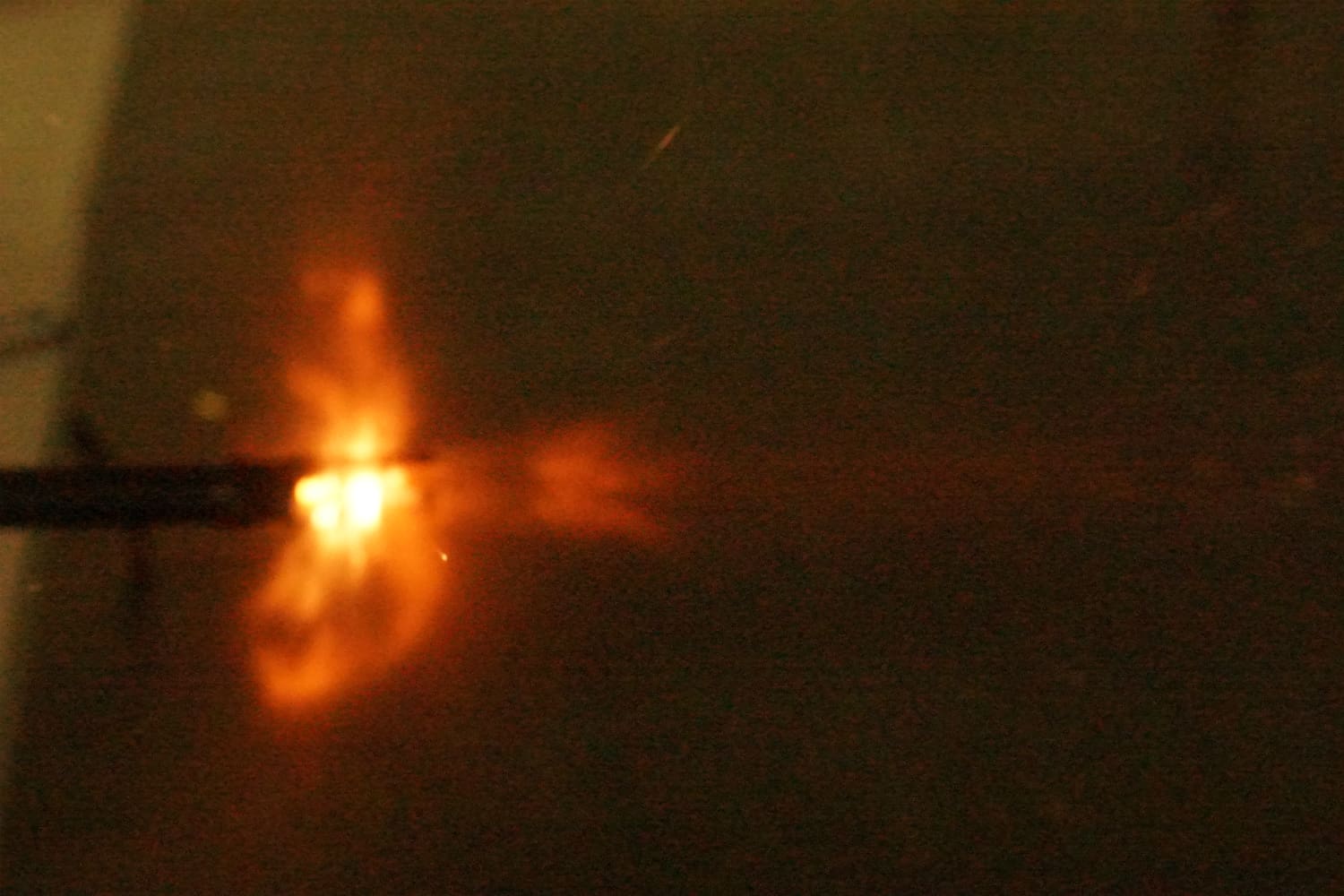
With a well-deserved reputation for being an excellent all-around muzzle device, the FSC556 visits us again after its inclusion in the first Muzzle Device Shootout.
PWS’ FSC (or Flash Suppressing Compensation) series are combination devices intended to reduce recoil while also reducing flash signature. The FSC556 is factory equipment on the FN SCAR16s and some other very nice rifles, including many from PWS of course. It also acts as a QD mount for the Gemtech HALO suppressor.
Machining is great, finish is good, and this is one clear case of excellent design where a “combo” device resulted in little compromise. Recoil reduction was very good, flash suppression was decent.
Material: steel
Finish: black
Length: 2.335″
Diameter (at largest point): 0.865″
Weight: 2.35 oz
MSRP: $99.95
RISE Armament RA-713 Razor Brake:
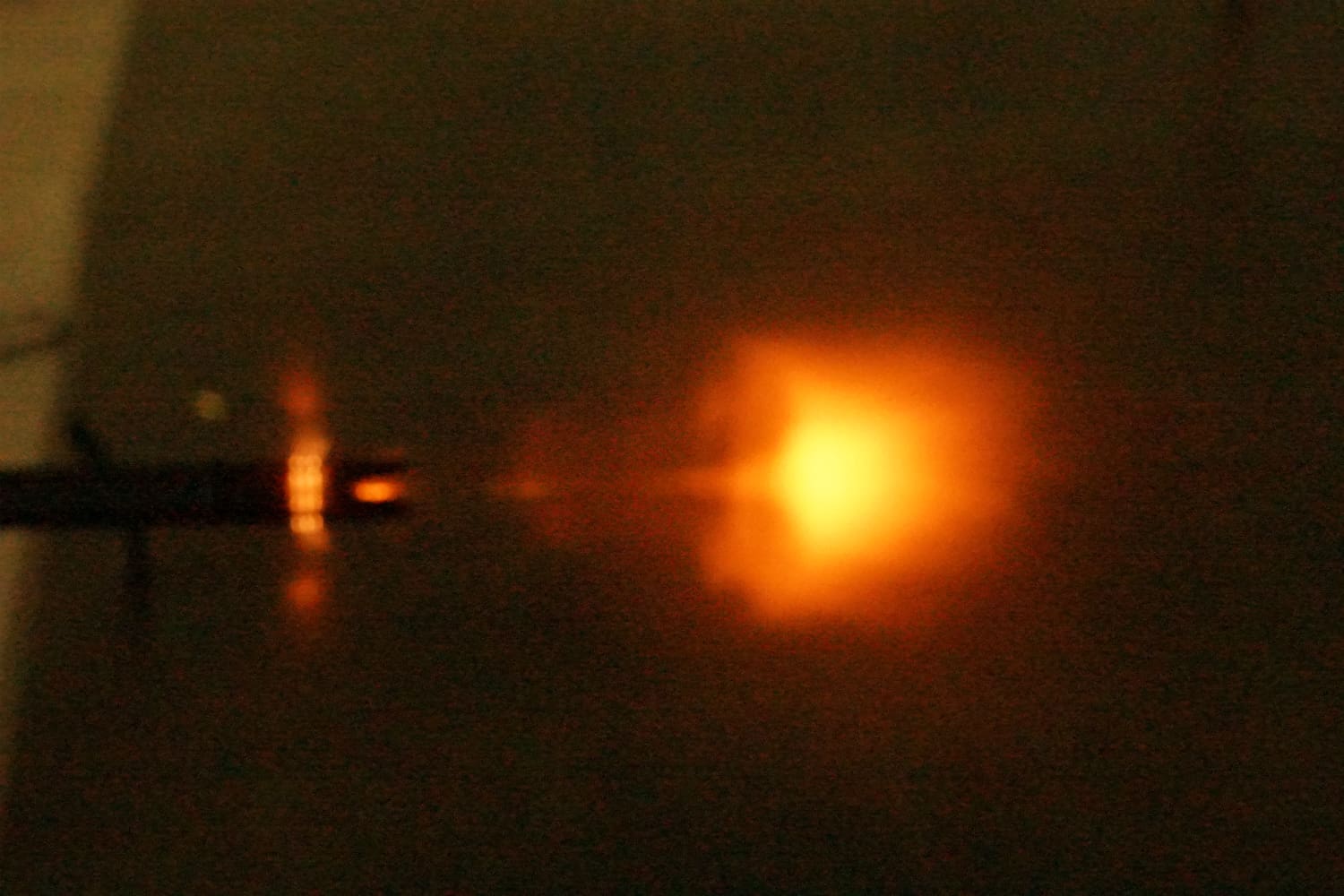
I admit, this one really took me by surprise. I figured this was a muzzle device designed to look cool but not really provide any other value, and I was expecting a healthy, bare muzzle-like fireball. Wrong. The Razor Brake is actually a pretty decent little flash suppressor. And hey, it does look cool and it’s super lightweight as well — the 2nd-lightest FH in this test, behind one made of titanium.
Machining and finish are top notch. I would have appreciated wrench flats instead of having to stick a flat-head screwdriver through one of those little slots (which actually is the recommended installation procedure), but unless you’re installing and removing dozens of muzzle devices for some internet test it’s probably not an issue.
Material: steel
Finish: black
Length: 2.063″
Diameter (at largest point): 0.752″
Weight: 1.31 oz
MSRP: $65
Seekins Precision Flash Hider:
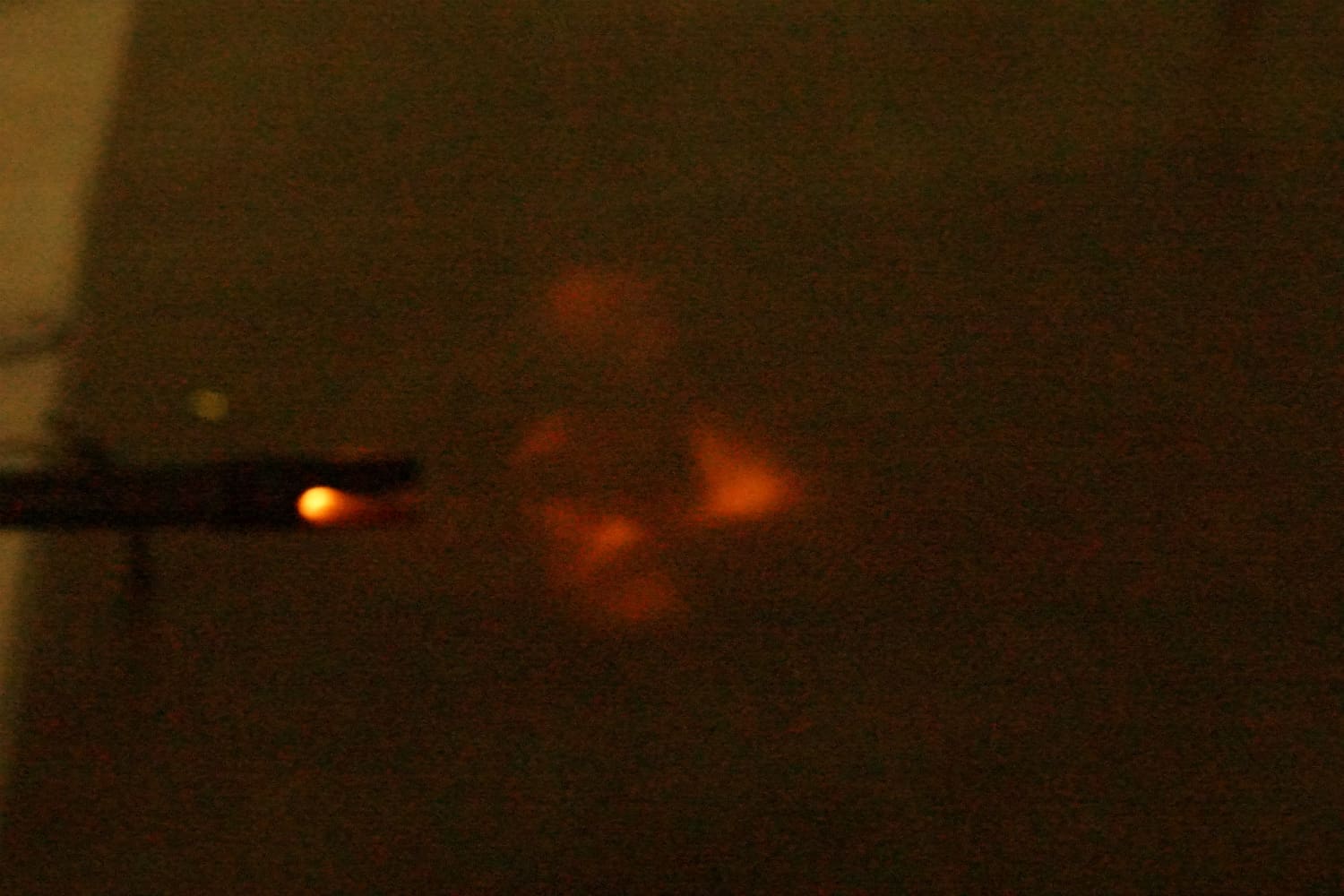
Once again we’re hit with proof that good looks and good performance aren’t mutually exclusive. Although the creative department may have been on vacation when Seekins came up with “Flash Hider” for its name (about as creative as “fireplace”), it sure does look cool. Machining and melonited finish are spot-on without an imperfection visible anywhere.
Considering the sharp aesthetic, solid performance, small size, light weight, and relatively low price point, I’d guess this is an extremely popular product.
Material: steel
Finish: melonited
Length: 2.20″
Diameter (at largest point): 0.86″
Weight: 2.39 oz
MSRP: $55
Smith Vortex Flash Eliminator / CMMG Vortex Striker Flash Hider:
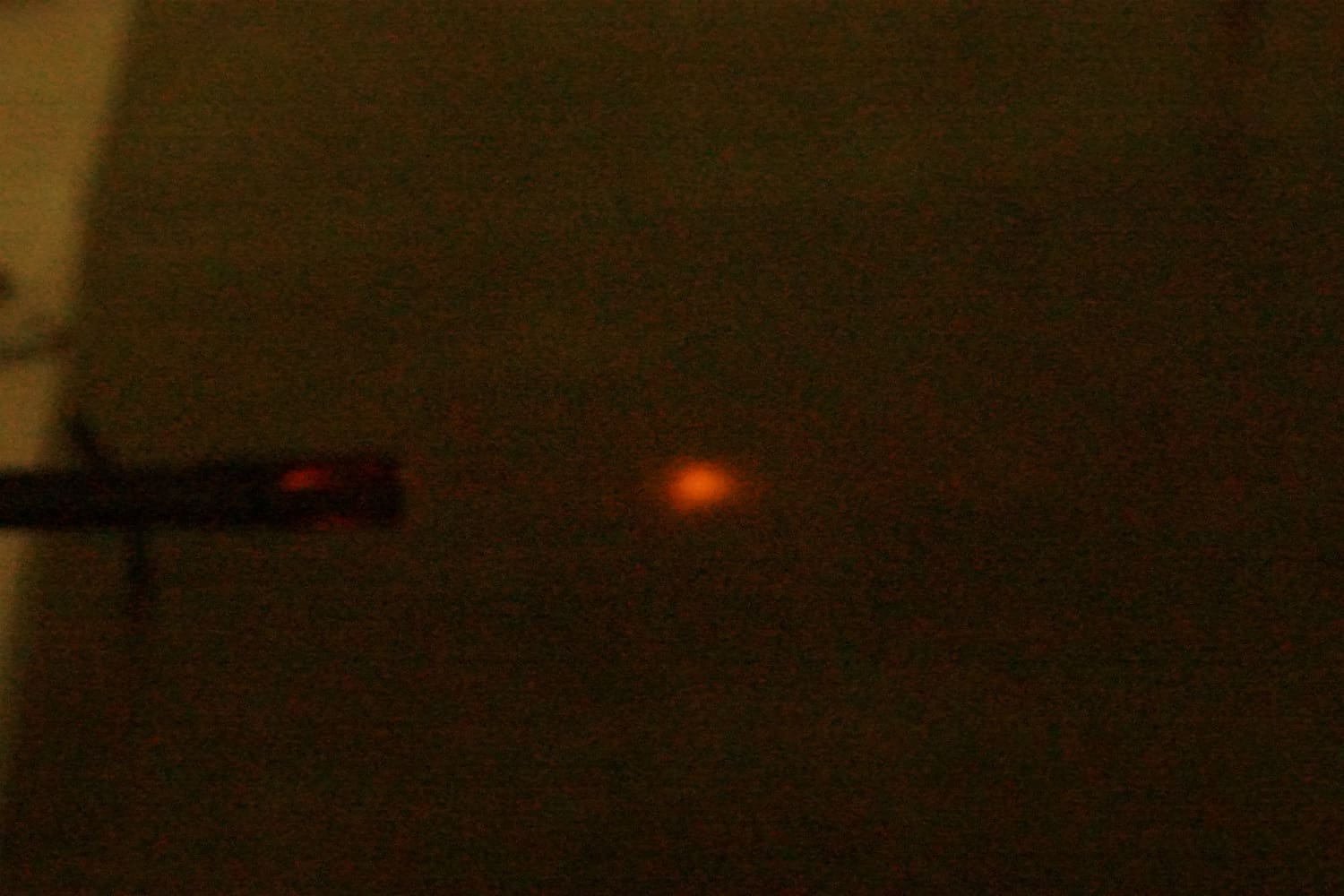
The Smith Vortex has long been the gold standard for flash hiders, and clearly that’s for good reason. I’ve combined the standard model from Smith Enterprise as well as the modified version from CMMG here because they perform identically. CMMG’s Striker variant adds tungsten carbide striker tips for your everyday glass breaking needs. Smith also offers a handful of versions for different mounting requirements as well as some models with external ribs for your aesthetic pleasure, but functionally this sample is representative.
Machining and finish are perfectly clean and even on both. The Smith appears to be parkerized and the CMMG looks more like it’s melonited, but neither company specifies on its website.
Material: heat treated steel
Finish: black
Length: 2.323″ (without carbide tips)
Diameter (at largest point): 0.86″
Weight: 3.12 oz (without carbide tips)
MSRP: $65 for Smith version, $129.95 for CMMG version
Spike’s Tactical Dynacomp Extreme:
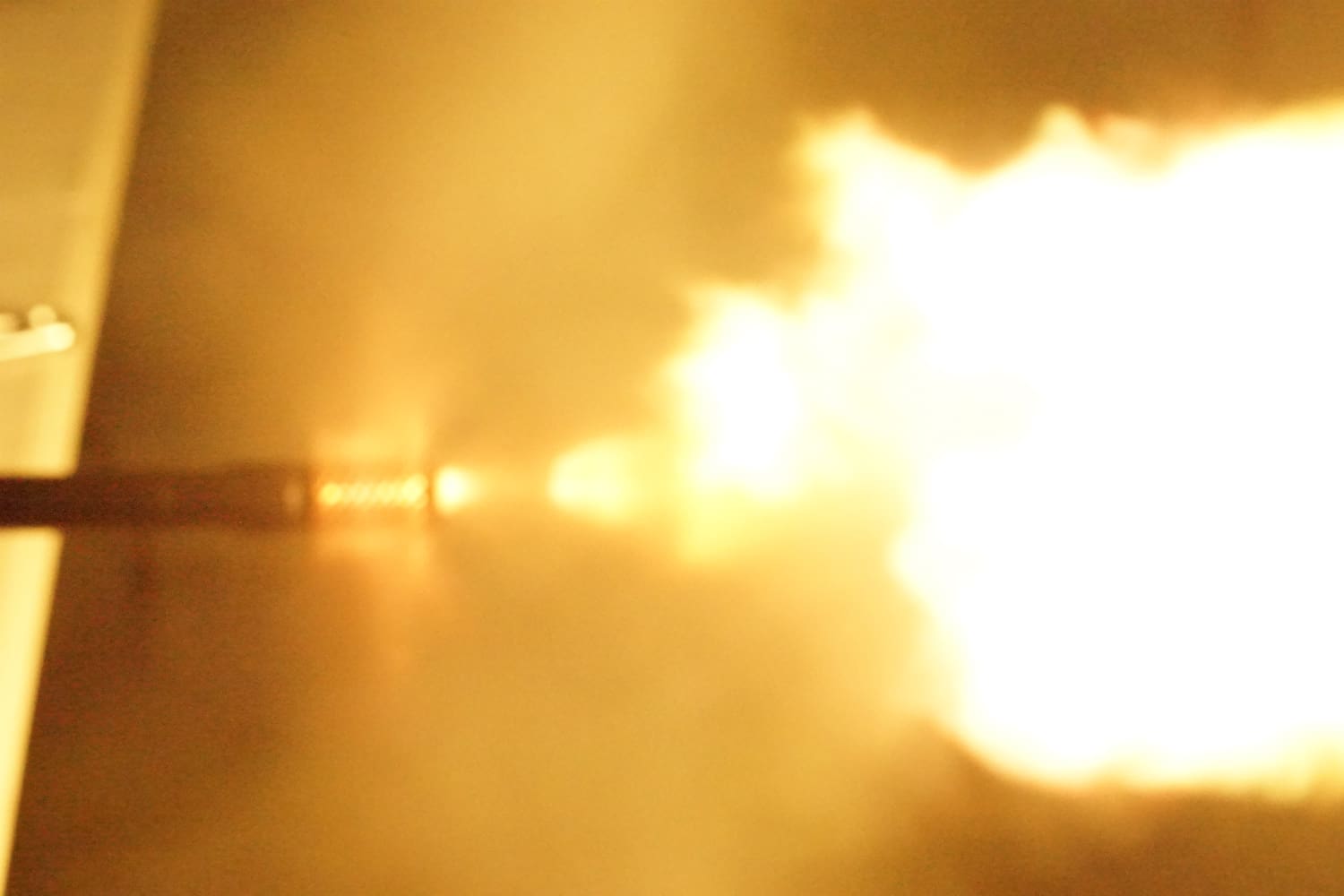
I like a deep black, semi-gloss melonite or nitride finish, and the Spike’s Dynacomp delivers here (they also make it in other finishes, like Nickel Boron). Machining is also near flawless and I’d say I’m generally a fan of this tons-of-tiny-ports aesthetic. Good muzzle control (it was in shootout #2), but obviously it isn’t doing much for flash or fire reduction. Although a bit more expensive, the Precision Armament AFAB does seem to provide at least as much muzzle control, more recoil reduction, and next to no flash. Still a solid choice, though, for the shooter looking for low concussion and low blast, plus muzzle control and some recoil reduction.
Material: 303 stainless steel
Finish: melonite
Length: 2.25″
Diameter (at largest point): 0.87″
Weight: 3.05 oz
MSRP: $89.95
Strike Industries J-Comp (Japan Type 89 Comp):
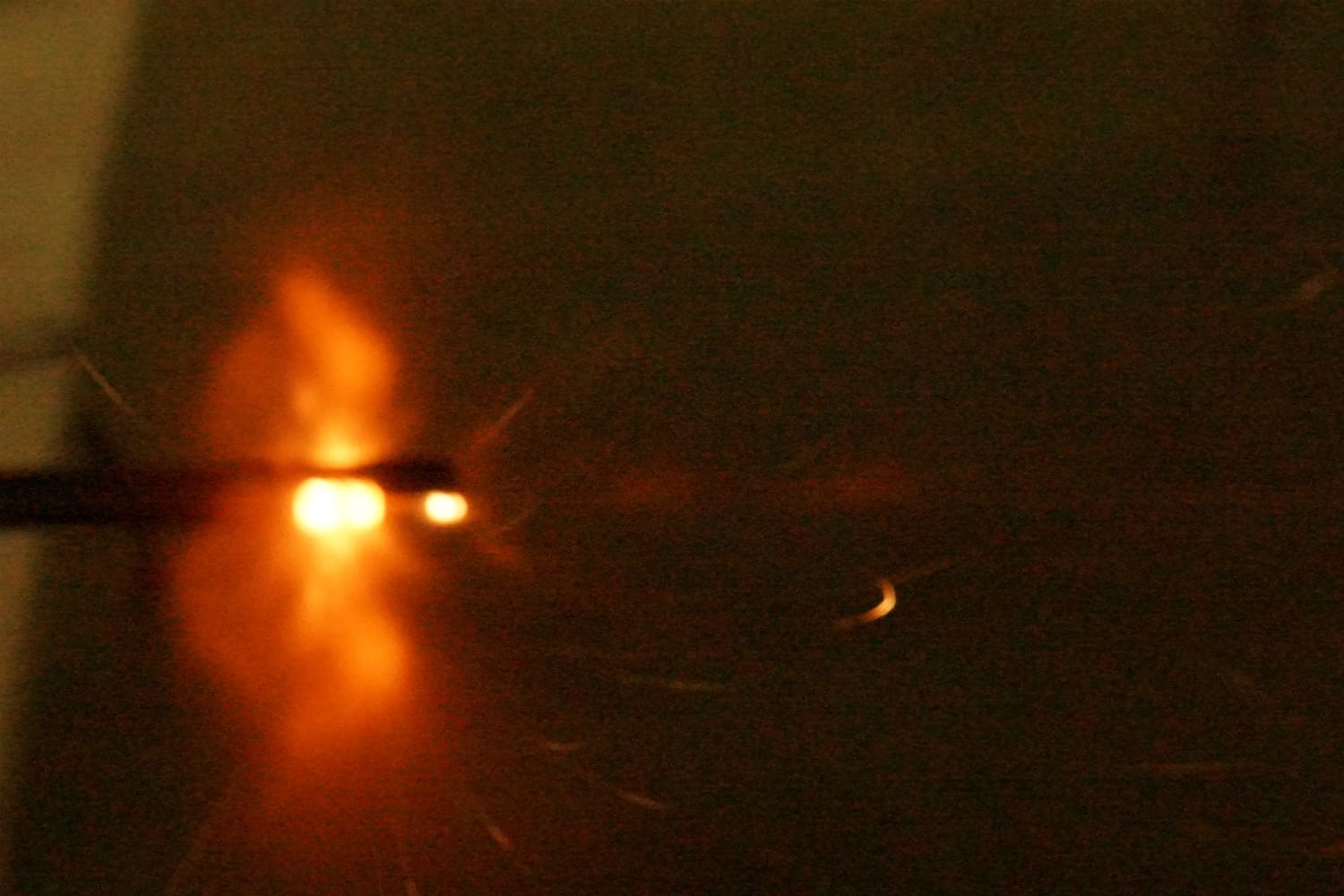
The J-Comp is actually pretty damn awesome, so it’s back yet again after appearing in both muzzle brake recoil tests. It’s an extremely effective brake, despite exhibiting low concussion, blast, and flash, and it has a simple and classic sort of a design. Machining and finish (note that mine’s a bit beat up on the wrench flats from being installed and removed a half dozen times) are average, but the price is dirt cheap. It basically crushes the other ~60 muzzle brakes and comps in recoil reduction per dollar, and it produces far less flash than most any other brake with effective blast baffles like it has.
Material: steel
Finish: parkerized
Length: 2.44″
Diameter (at largest point): 0.86″
Weight: 2.98 oz
MSRP: $29.95
Strike Industries Venom Flash Hider:
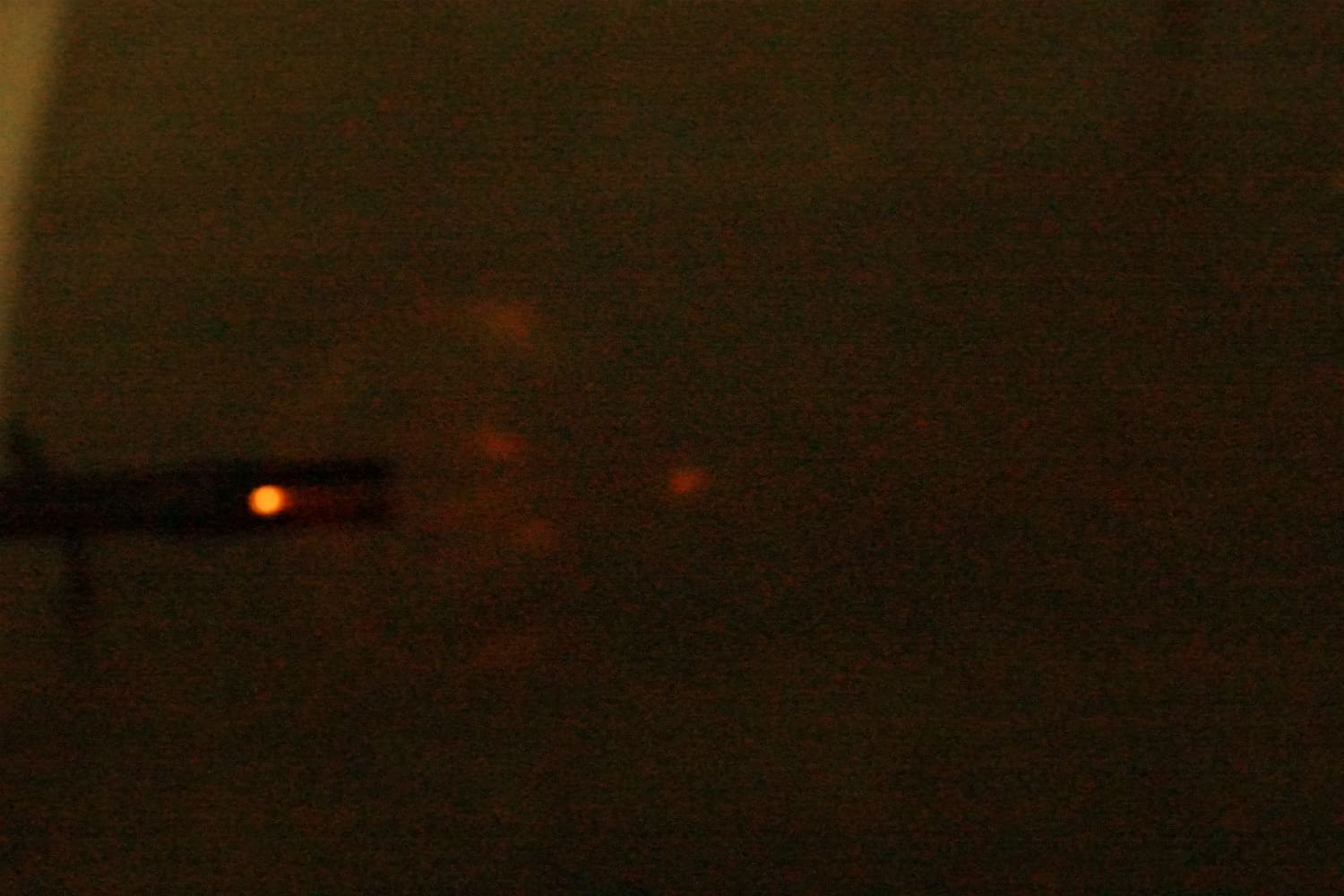
Strike Industries’ Venom is another cool looking flash hider that performs. Machining is quite nice, and the parkerizing looks good. As with most of SI’s products, the asking price is also really affordable. It’s just long enough to bring a 14.5″ barrel up to 16″, and is pre-drilled for pinning and welding.
Material: steel
Finish: parkerized
Length: 2.36″
Diameter (at largest point): 0.972″
Weight: 3.01 oz
MSRP: $44.95
Tactical Advantage Armory FH-23 Titanium Flash Hider:
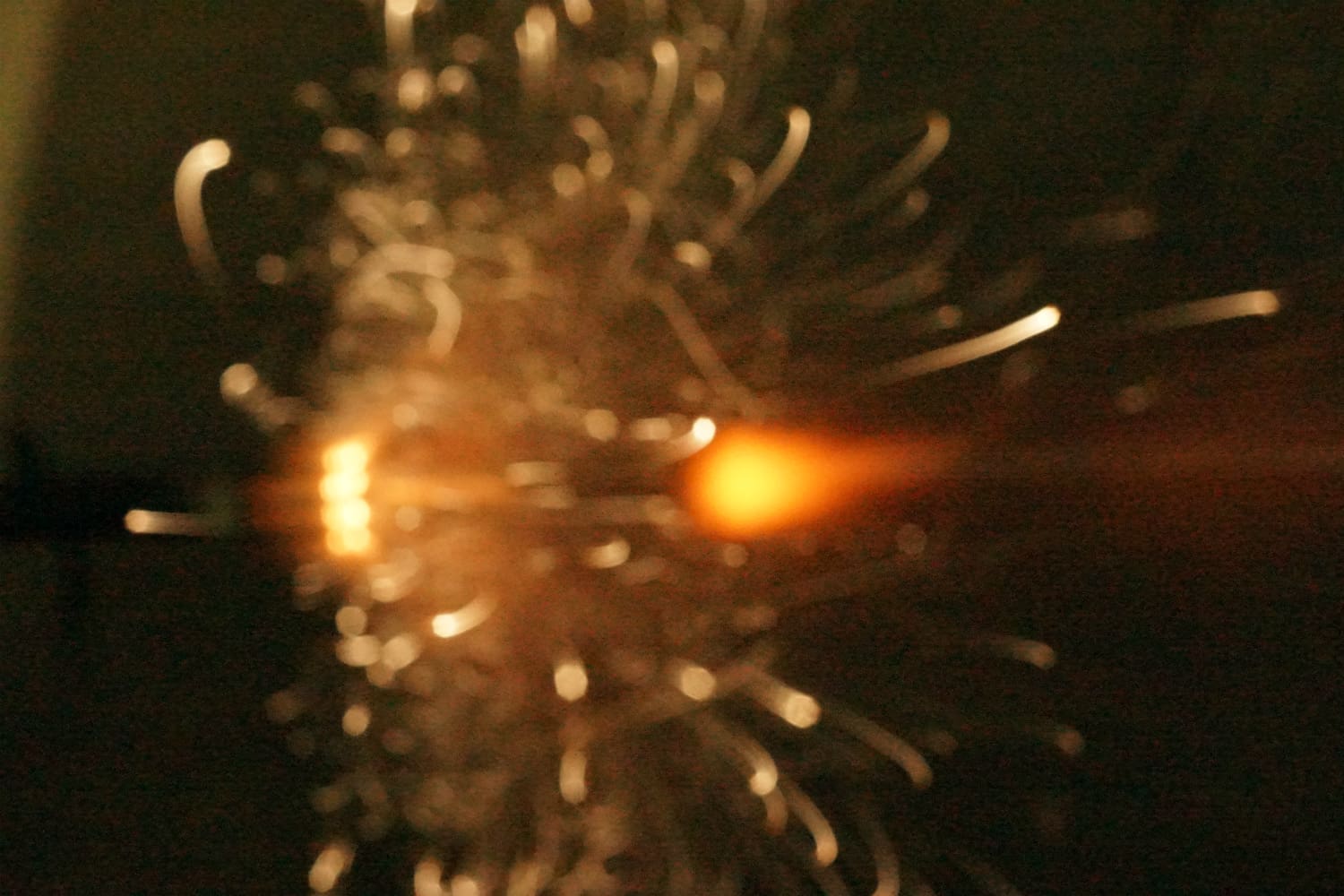
So the other titanium muzzle device I tested 9 months ago also threw off a bunch of sparks at first. It seems to be temporary and wears off after a bit of shooting, but I didn’t have enough ammo with me — this test took all 120 rounds I brought plus a handful more (the same brand) donated by Sharp Shooting so I could wrap up — to try and “break in” the FH-23. The photo above, however, is of rounds 7, 8, and 9. The first three were pretty epic:
I believe this is Ti dust left over from the sand blasting process after it’s machined. Can’t say I’m entirely sure, but the other comp I tested stopped doing it and I’m confident this one is just a few more rounds away from knocking it off as well. I’ll be keeping this FH for a future test and shooting with it some more in the meantime. It’s also available Cerakoted in various colors, and that would prevent the light show right off the bat.
Anyway, it’s a sharp-looking muzzle device that’s machined with excellent precision, and it’s incredibly lightweight. Hopefully I’ll get my hands on some more Ti items in the future.
Material: Grade 5 Titanium
Finish: satin (also available in various Cerakote finishes)
Length: 2.06″
Diameter (at largest point): 0.94″
Weight: 1.15 oz
MSRP: $115.99
Troy Industries 3-Prong Flash Hider:
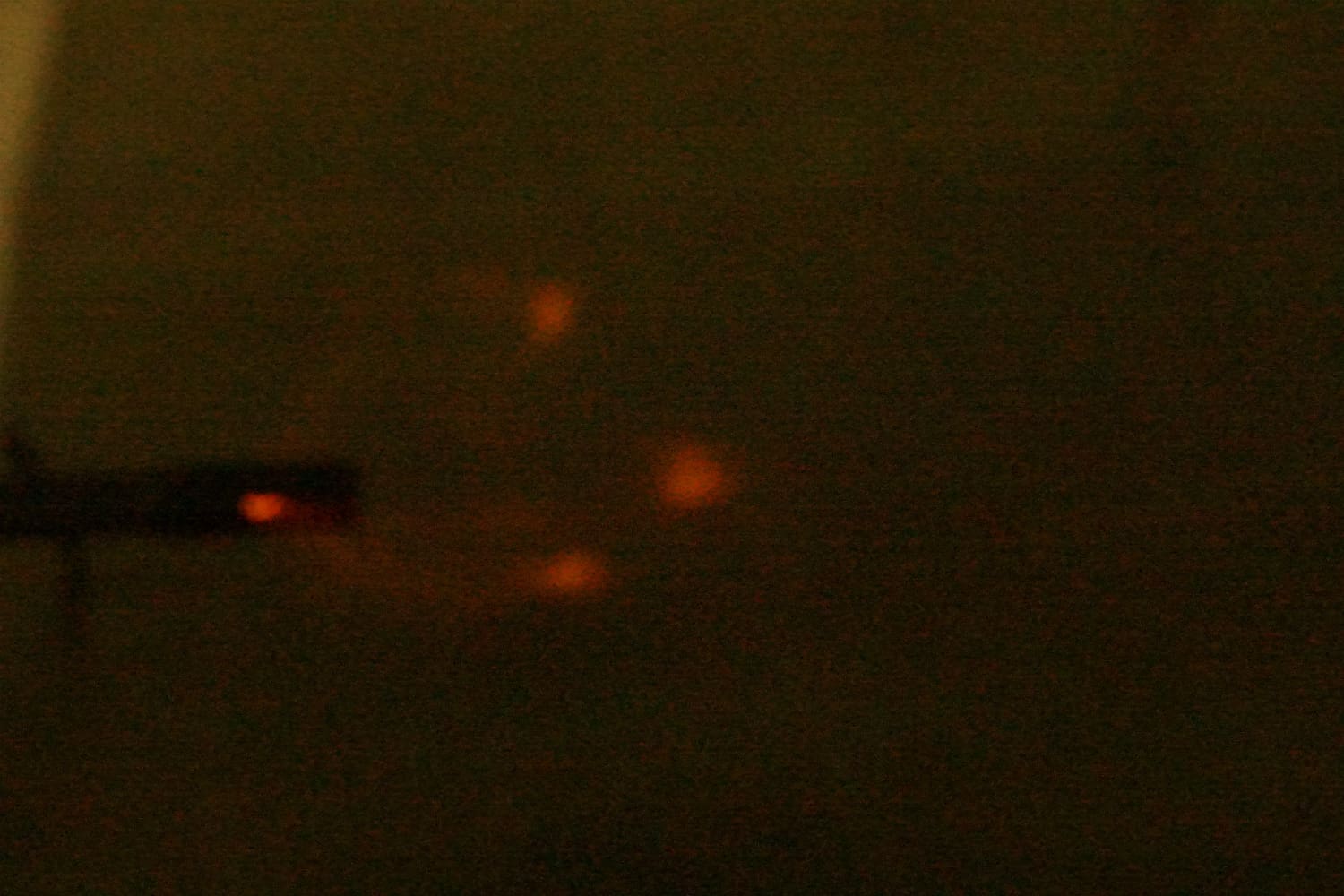
Simple, small, and stout. Dang effective, too. Machining is pretty good, and the parkerized or phosphated finish is even. It isn’t on Troy’s website for some reason, but it’s in their product catalog and it’s available — usually for like $51 — at various retailers online.
Material: hardened 4140 steel
Finish: black
Length: 2.168″
Diameter (at largest point): 0.852″
Weight: 3.01 oz
MSRP: $59
Troy Industries Claymore Muzzle Brake 556:
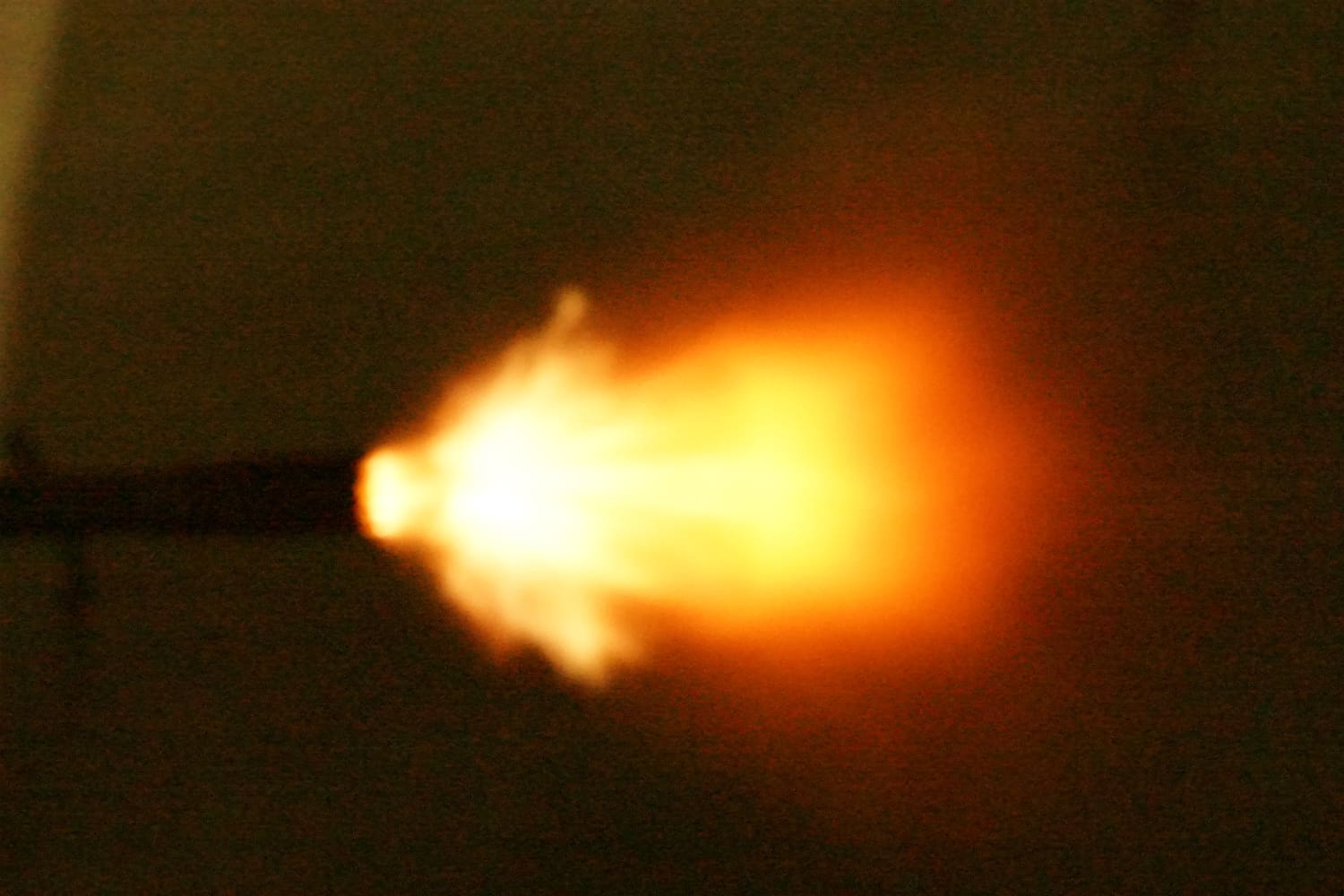
Troy’s Claymore is a linear compensator and it does an excellent job of sending blast, concussion, and sound forwards. Although the photograph looks relatively similar to me as the one from the other linear compensator in this test, the Black River Tactical Covert Comp, the light meter sure gave a different reading. My subjective experience from the previous muzzle brake tests as well as this FH test is that the Claymore is noticeably brighter, and I simply can’t explain why that isn’t obvious in the photos.
Machining and finish are basically what I’d call “fast and dirty,” but the truth is I think this is probably the most appropriate choice for most muzzle devices anyway. The asking price should be adjusted to reflect this and, indeed, Troy’s options are on the affordable end of the spectrum with many linear comps coming in over 2x the price.
Material: hardened 4140 steel
Finish: manganese phosphate
Length: 2.24″
Diameter (at largest point): 0.97″
Weight: 3.25 oz
MSRP: $64
Troy Industries Medieval Flash Suppressor 556:
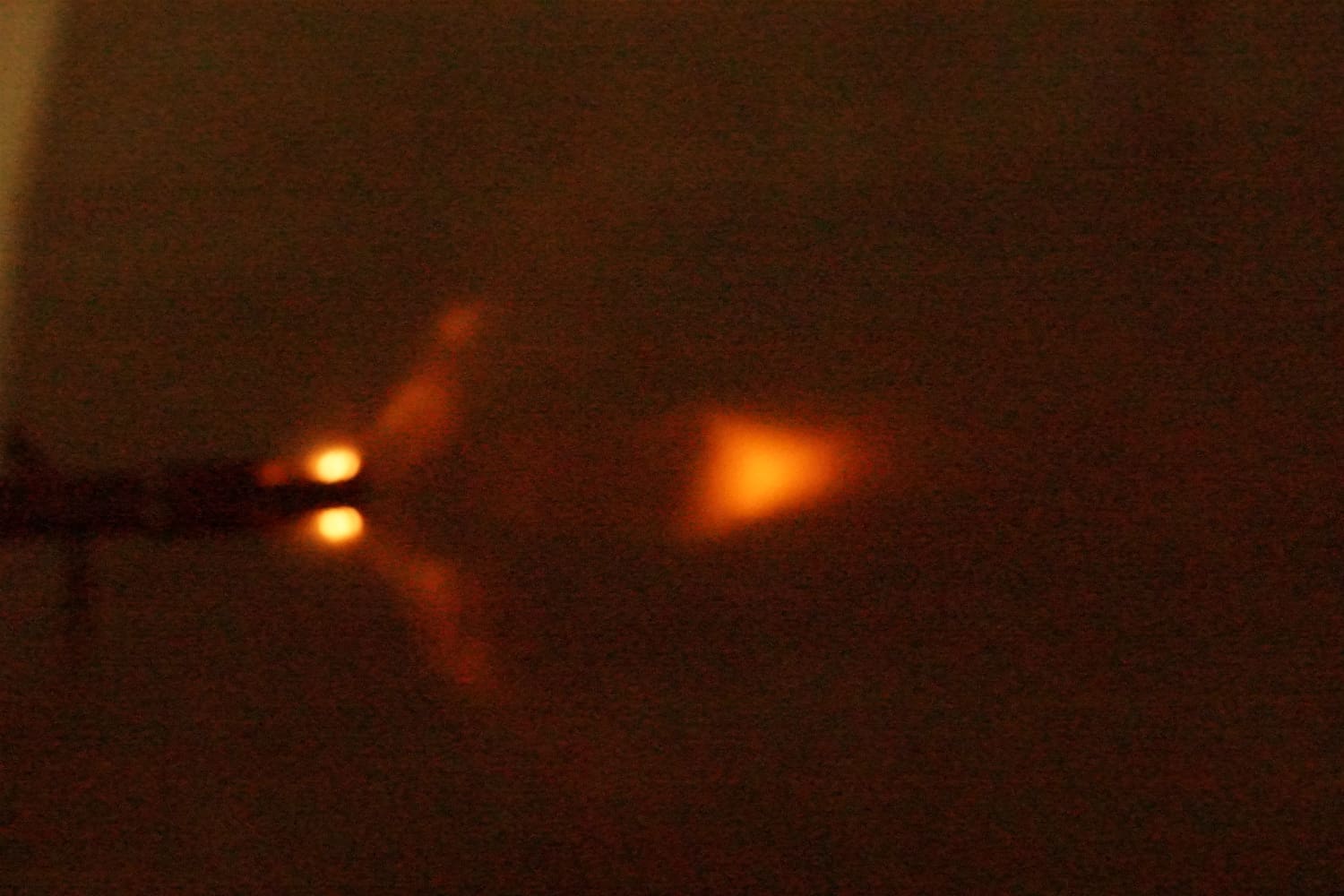
The slots in Troy’s Medieval Flash Suppressor are few and far between, with no slot on the bottom to prevent kicking up dust and to help mitigate muzzle rise. Those three slots seem to do the trick at disrupting gas flow, though, and suppressing flash as designed. As what would otherwise be prongs are connected at the muzzle, there’s no chance of that “tuning fork” ringing effect that some 3- and 4-prong flash hiders are good for.
Machining and matte finish are about average. Price is below average.
Material: ordnance steel
Finish: black
Length: 2.20″
Diameter (at largest point): 0.86″
Weight: 3.16 oz
MSRP: $45
Witt Machine Directional Muzzle Brake w/ Spiral Cut Shroud:
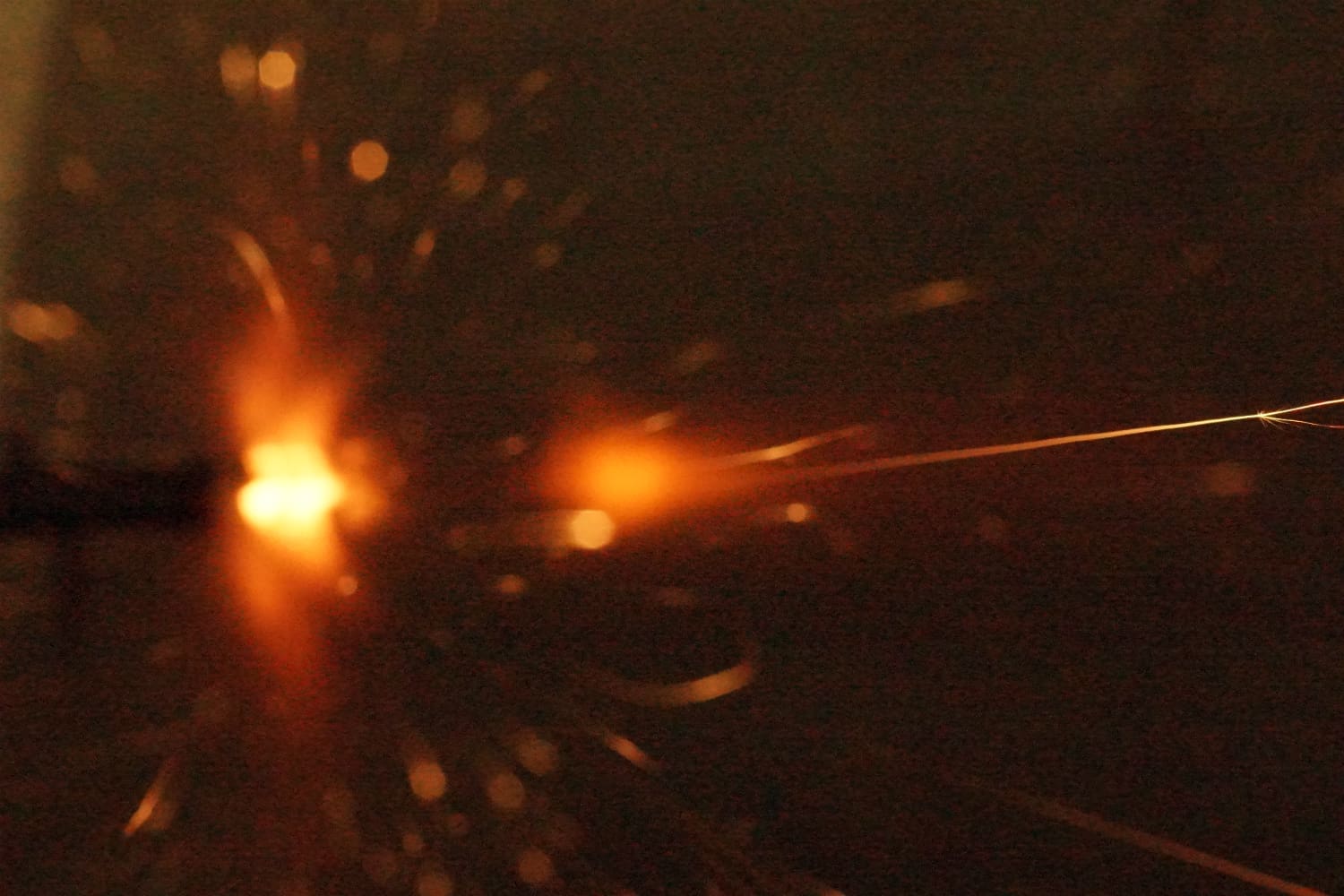
This is a recoil-eliminating muzzle brake first and foremost, so it will definitely be coming back for the next round of brake testing. I’m impressed with how well the spiral shroud suppresses flash. The Directional Brake also ships with a solid shroud to effectively turn it into a linear compensator. Or, run it without a shroud for maximum recoil reduction. As you can see in the photos above, the shrouds simply screw right on.
Machining on my examples is very sharp and clean, and the Cerakote finishes are even. Pretty cool that, when you order your Directional Brake, the product page allows you to choose from any of the offered finishes for the brake, spiral shroud, and solid shroud separately.
Material: 416 stainless steel
Finish: brushed stainless is standard, and a few Cerakote colors are optional
Length: 2.135″
Diameter (at largest point): 0.957″ with shroud on
Weight: 2.79 oz with spiral shroud
MSRP: $125
Yankee Hill Machine Phantom 5C2 Comp/Flash Hider:
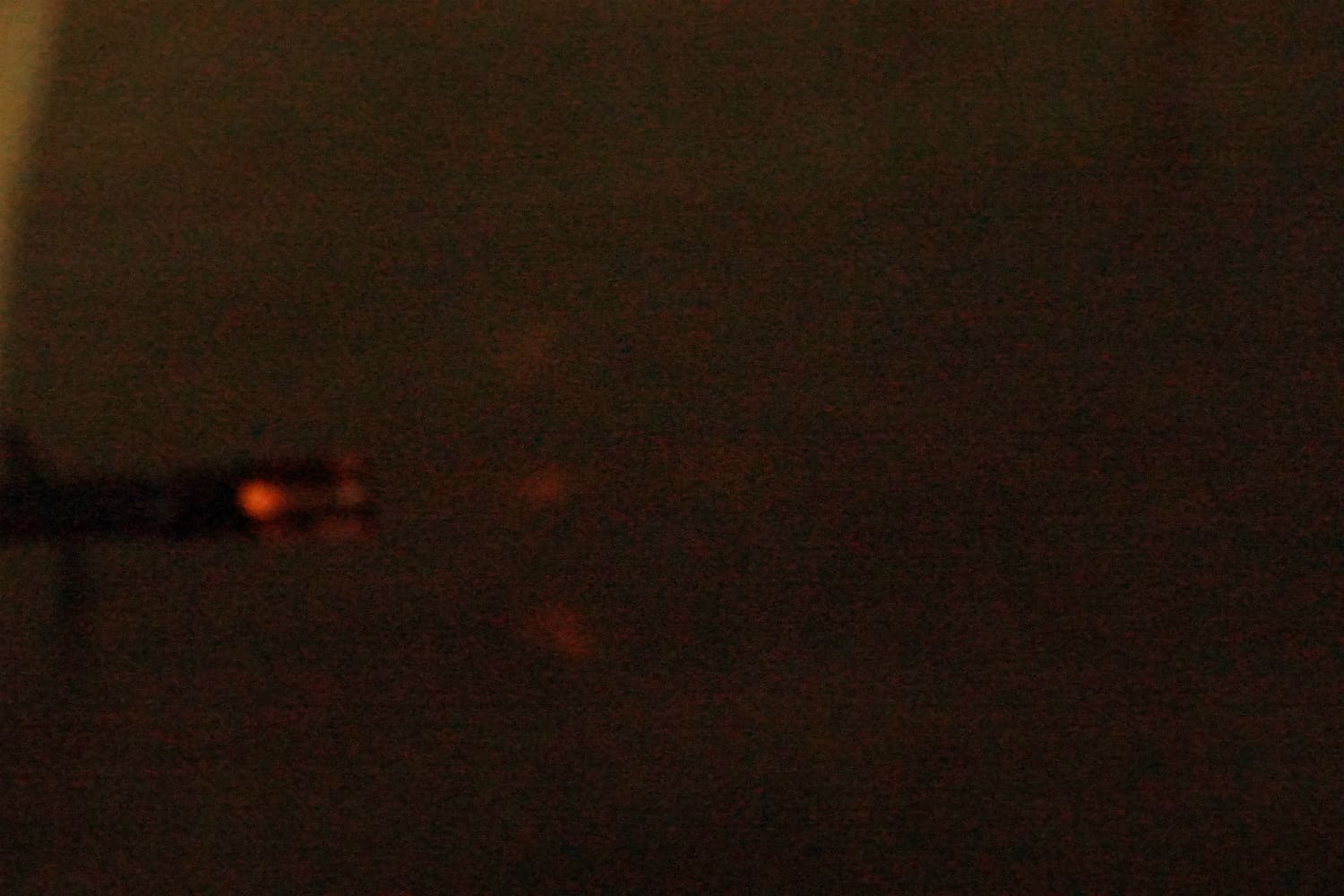
The YHM Phantom is right up there with the Smith Vortex as one of the gold standard, known quantities in the flash hiding world. Once again, the reputation is well-deserved and the Phantom is a solid performer. Machining and finish are both essentially flawless. This is a very nice looking, lightweight, and relatively compact unit that performs well at a dirt cheap price.
Material: steel
Finish: black
Length: 2.225″
Diameter (at largest point): 0.863″
Weight: 2.03 oz
MSRP: $34
Final Thoughts
Thanks to doing this inside of Sharp Shooting Indoor Range, I’ll be able to do more flash testing in the future and should arrive to find exactly 0.25 Lux of ambient lighting every time. As a lot of folks are already asking about the “best” all-around muzzle device — recoil reduction and flash reduction in addition to low blast and concussion — I’m planning on revisiting to flash test some of the non-dedicated “flash hiders” that are still here (Houlding Precision Curse, Thunder Technologies Brake, the Precision Armament M4-72 since it won both recoil reduction tests, etc).
“Best,” of course, is highly subjective and depends entirely on what aspects each person values more. Is it recoil reduction, flash reduction, aesthetics, quality, price, weight, size, blast/concussion? Suppressor mount capability? Certainly there are a few muzzle devices that stand out in my mind already, such as the AFAB and EFAB from Precision Armament, the Strike Industries J-Comp, PWS’ FSC556, 2A Armament’s T3 Comp, the BCM Comp MOD 1, and maybe the to-be-flash-tested-soon Thunder Technologies Standard Brake and Houlding Precision Curse will keep the Lux low as well.
Until next time. . .

















